This website uses cookies to improve your browsing experience and analyze the use of the website. Learn More


12 Roman London Ruins to Visit

This post covers Roman London, where was it, and what remains of it.
We include a map of the top Roman sights and tips on where to find them, as well as how to take tours of a few of them.
Let's dig in! (pun intended)
- What was Londinium?
- 12 Roman Ruins to Visit
- Old City of London Tours
- Self-Guided Tours of London
- Things to do in London
WHAT WAS LONDINIUM?
Some visitors to London might be surprised to hear that there is a Roman Wall and Roman ruins in London, but they do exist.
Around the year 50 BC, the Roman settlement of Londinium was established near where the City of London stands today.
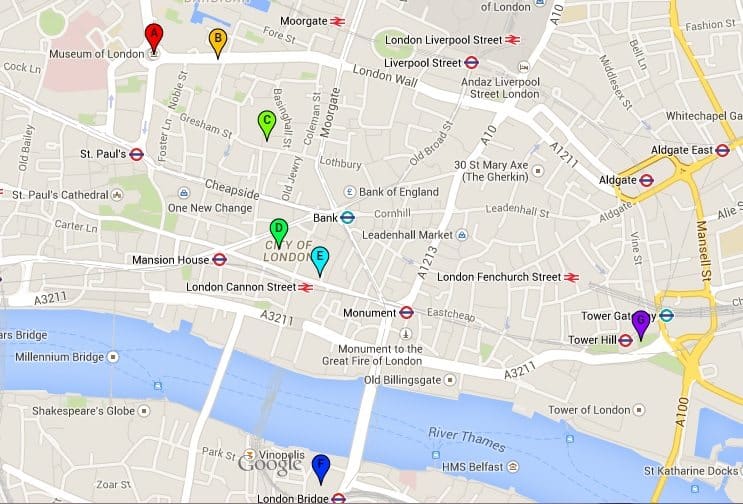
Click here for an interactive version of the map
A major hub in the Roman Empire, Londinium stood on the River Thames until it was abandoned by the Romans in the 5th century.
Although bustling and important, Londinium was quite small – about the size of today’s Hyde Park.
Boasting a complicated network of roads connecting Londinium to the rest of the country, an amphitheatre, temples, and markets, Londinium was a sophisticated city and it is still possible to visit the remains of this ancient town today.
ROMAN LONDON RUINS
Below are the top locations for either Roman London ruins or artifacts.
They are listed in the same order as found in the map posted above.
1. Museum of London
For a true treasure trove of Roman artifacts, one need only visit the Museum of London.
Showcasing the history of London from well before the Romans themselves, the Museum holds a plethora of artifacts dating from the time of Londinium.
Currency, jewelry, household goods, and figures of worship, the Museum of London’s collection cannot be topped.
2. Roman Wall at the Museum of London
Connected to the museum is a piece of the Roman Wall, a 5 km (3 miles) long, 6 m (20 ft) high, and 2.5 m (8 ft 2 in) thick structure, that would have surrounded Londinium roughly 2,000 years ago.
This wall stood, in one form or another, until the 17th century.
A dominating feature for centuries, today the wall has been reduced to a few small pieces, the largest of which is located here.
More London Wall Locations
- Near Tower Hill Underground Station
- Outside the Museum of London
- On the Barbican Estate near Barbican Underground Station
- Check out or map above for a route to walk the Roman wall
3. Amphitheatre – London Guildhall
The only Roman amphitheatre in Londoninium was unearthed in 1988 when London’s Guildhall was excavating a site for their new art gallery.
Nearly 2,000 years after it was last used, the amphitheatre was opened to the public again as a part of the new gallery.
Animal fights, public executions, and gladiatorial combats would have been held here, attracting huge audiences from all nearby Roman settlements.
It is now possible to visit the amphitheater when going to the gallery at the Guildhall.
4. The Temple of Mithras
Originally uncovered in the 1950s during rebuilding work in the City, the Temple of Mithras was the largest and most important temple in Roman London.
A myriad of figurines and tributes (some of which are in the Museum of London now) were found at the Temple, indicating that it was used frequently by Londinium residents.
Because of the pressing need to build over the site of the Temple, it was very carefully moved to Temple Court on Queen Victoria Street.
That was until the media company Bloomberg, building their European HQ on the land that stands on the original site, decided to reconstruct the Temple back in its original position – where it is believed it was erected in the year 240.
It's free to visit but you need timed-tickets .
5. The London Stone
A block of limestone measuring 53x43x30cm (21x17x12in), the London Stone is first made reference to in the year 1100 AD.
The original function and usage of the stone aren’t known for certain but it is thought to be Roman in origin.
Potentially used by the Romans as a distance marker, the stone has existed in this part of London for centuries and by medieval times and was considered an important London landmark, sitting in the heart of the City of London.
The stone was considered so important that laws were drawn up on top of it and oaths were taken over it!
Today it lies, quite inconspicuously, in a small compartment at the bottom of a building located at 111 Cannon Street, available to be seen by anybody who walks past – although usually overlooked by the majority of pedestrians.
Learn more about the London Stone .
6. Roman Road in Southwark Cathedral
Roman London had a bridge crossing the River Thames, where the current London Bridge stands today.
On the southern side of the Roman bridge was a road that passed right through where Southwark Cathedral stands today.
Recent rebuilding of the gift shop/visitor centre at Southwark Cathedral unearthed part of this road and it is possible to see the road when visiting the shop at the Cathedral today.
7. Billingsgate Roman House & Baths
The City of London organizes tours of the remnants of a Roman bath and house located in the basement of an office building.
The tours take place on Saturdays and Sundays, last 45 minutes and cost just £9/adult and £7/concession. Book the tours on their website .
8. Tower Hill Roman Wall
Just adjacent to the Tower Hill Underground Station stands one of the highest remaining pieces of the Roman Wall.
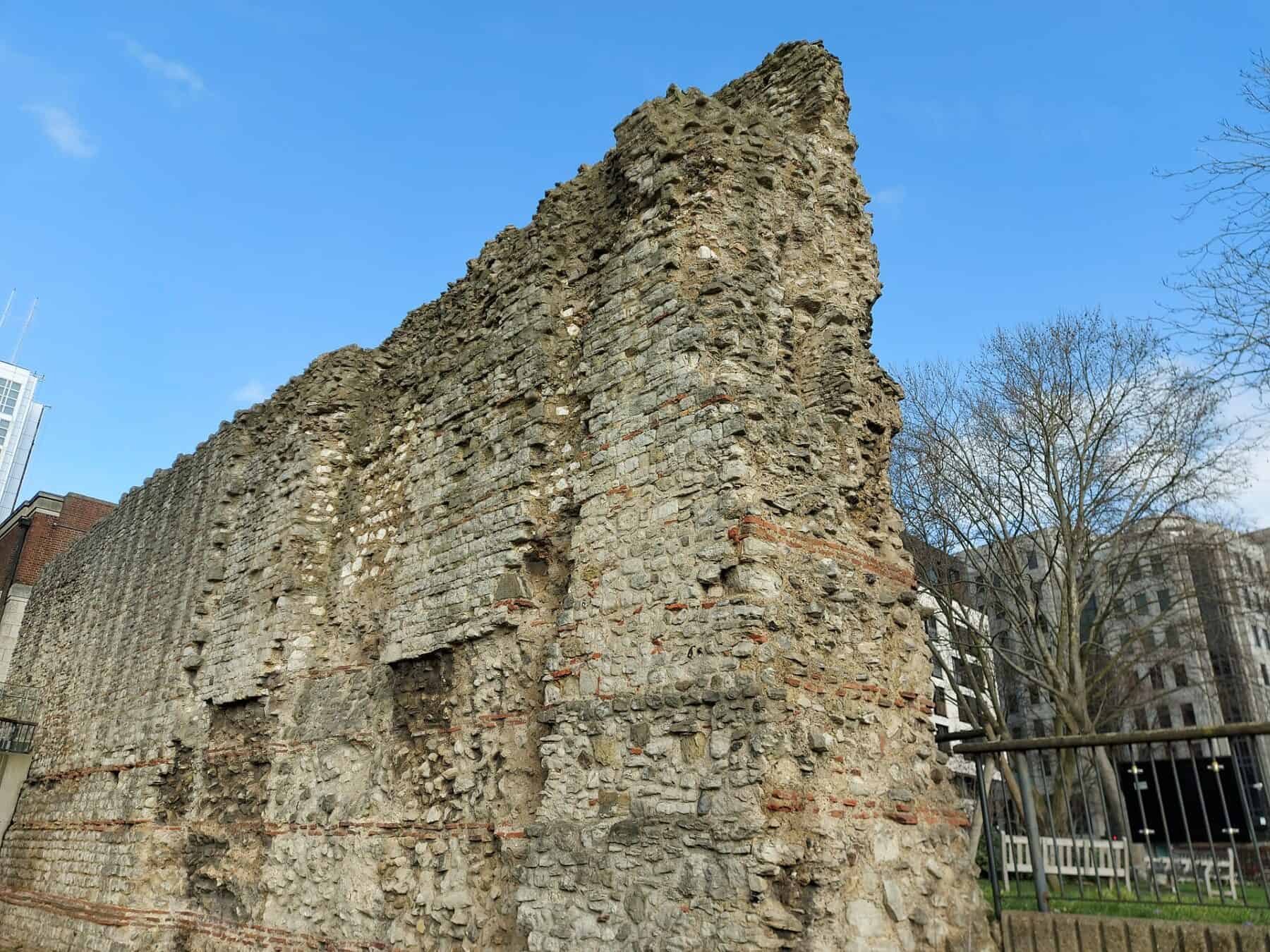
The base of the wall is the original Roman stonework (up to about 4m high), and later medieval additions can be seen the higher up the wall you look.
The wall originally surrounded London on four sides, with the southern edge running along the shore of the River Thames.
Today, there is a statue of Roman Emperor Trajan, who actually never visited Britain, but did expand the Roman Empire to its' maximum extent.
9. Leadenhall Market
Leadenhall Market is well known for its' beauty as well as its' use as a filming location for the Harry Potter films .
But what many of the people who pass through the glass and ironwork structure don't know is that there'd a hidden piece of Roman London tucked away in the back of a barber's shop!
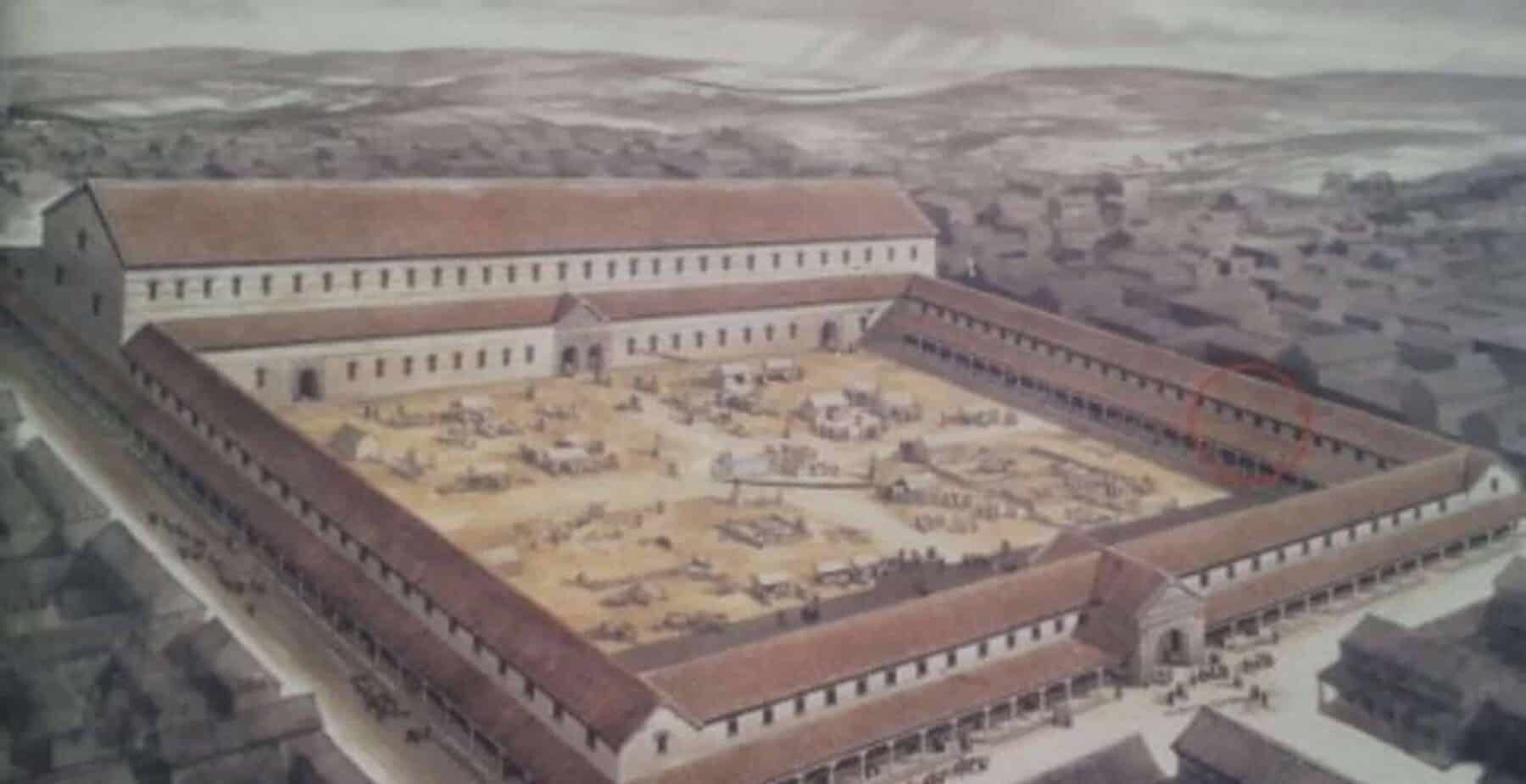
Leadenhall Market sits on top of what was once a roman basilica, which was forgotten to time until construction in the 19th century uncovered the ruins.
The only piece that is visible to the public is on the ground floor of Nicholson & Griffin's hairdressers, situated right on the corner of the market and Gracechurch Street.
To see it, you will need to politely speak to the staff but they are usually happy to bring people down and show them the remains of a supporting-pier from the basilica that once stood here.
The ruins are kept behind a glass wall, right next to one of the barber's chairs! A truly bizarre but fascinating piece of London's history.
10. Roman River Wooden Piling at St. Magnus the Martyr
The parts of the Roman Wall that touched the River Thames were built on top of thick wooden pilings.
Almost all of them have beeb lost to time - except for the singular piece that still survives, on display outside St. Magnus the Martyr Church!
Check out our video on the history of London Bridge below to see this original piece.
11. All-Hallows-by-the-Tower
This charming church was originally founded in the 7th century - so not quite as long ago as Londinium.
However, after bombing damage in the Second World War, it was discovered that some of the ground floor structure had been built using Roman tiles and stonework.

Today, there is a museum in the crypt of the church, displaying portions of Roman pavement, as well as artefacts discovered during reconstruction efforts.
Perhaps one of the most useful items is an accurate model of Londinium, built in 1928 by Captain Lowther.
It shows the city as it would have been in AD 400, including the basilica under today's Leadenhall Market.
12. St. Bride's Church
Known primarily for its' legendary association with wedding cakes, St. Bride's Church is believed to sit on a site of worship dating back to the 7th century.
The current version was rebuilt in the 17th century by Sir Christopher Wren, but hidden in the crypt are even older pieces of history.
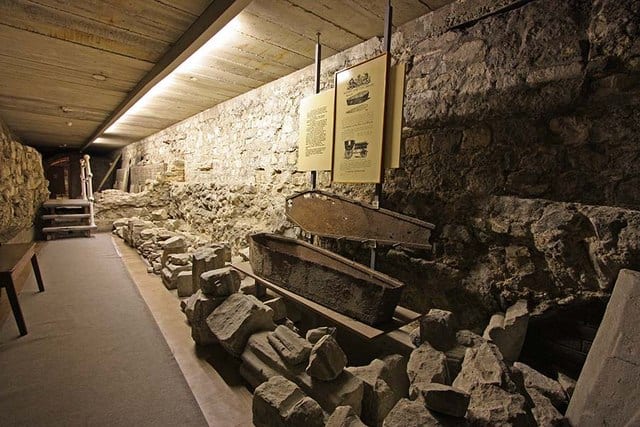
Uncovered in the 20th century, the crypt is home to medieval lead-lined coffins but also a roman pavement and a roman ditch.
A ditch doesn't sound that exciting, however it's a bit of a historical mystery as it's much deeper than the ditch that would've surrounded the Roman Wall - and nobody knows why!
Also in the crypt are Roman artefacts and the remains of a mosaic.
RELATED POSTS
Choose a Destination... I want them all PLUS general travel tips. Amsterdam Berlin Boston Charleston Chicago Dubai Lisbon London Los Angeles Miami Nashville New York City New Orleans Paris Philadelphia Prague Rome San Francisco Washington DC
About The Author

North America
United kingdom & ireland, middle east & india, asia & oceania.
- Find a Guide
- Walks & Tours
- Members Area
Discover Official Walks & Talks
Roman london tour: thurs & sun.
The original City beneath our feet
What have the Romans ever done for us Londoners? Plenty!
Join our Roman guided tour and let us ‘roam’ around the City and discover a history that dates back nearly 2,000 years. Let one of our qualified City of London Guides reveal the ancient city of Londinium that lies beneath your feet.
- Learn why the Romans founded the City of Londinium, what they bought - and what they liked to export.
- See the site of a Roman bathhouse that’s now a pretty garden
- Discover a temple to Mithras that was only discovered after bombing in World War Two
- Take in a view of the original Roman wall that guarded the City 1,800 years ago.
Please note: children must be accompanied by an adult at all times.
BOOK YOUR PLACE HERE
Photos: courtesy of Niki Gorick
Read about our walk in the Londonist
We offer daily, weekly and monthly walks around the City of London
Our daily walks run from the City Information Centre, just south of St Paul's. You need to book via Eventbrite to secure you place. Note : the cut-off time for booking our daily walks is 21:00hrs the night before. If we don't have any bookings then the walk will not take place.
Our weekly walks have individual booking pages and earlier cut-off times, please see the individual listing.
We've adde d 3 new walks for this season:
Secrets and Symbols, News from Fleet Street, and From Shakespeare to Oscar Wilde
Billingsgate Roman House and Baths open
This unique site is now open for this season of tours. Find out more.
Leadenhall Market: Beer, Bread and Beans!
This is a limited-edition, evening tour exploring the history of food and drink in and around the market in May and June. Find out more
Private tours
If you'd like to organise your own walk , lecture or a virtual tour, then please use our Find a Guide section. If you're a member of an Arts Society or a U3A or other group we'd love to take you on a tour of the City. And if you're a company based in the City who'd like to organise a social event for your work colleagues, why not book a walk with us?
If you've been on a walk recently we'd love to hear from you. Why not leave a review on our TripAdvisor page? We've been awarded TripAdvisor's Travellers' Choice for 2023!
Normal price, concessions.
City Information Centre
All Walks & Tours

In Charles Dickens' Footsteps: Wednesdays
Find out dates & details

Guildhall: Monthly Tours

Smithfield Market Tours

Posted on Published: 7th December 2021 - Last updated: 7th July 2023 Categories London History
By: Author Julianna Barnaby
Roman London: Finding Londinium’s Roman Ruins
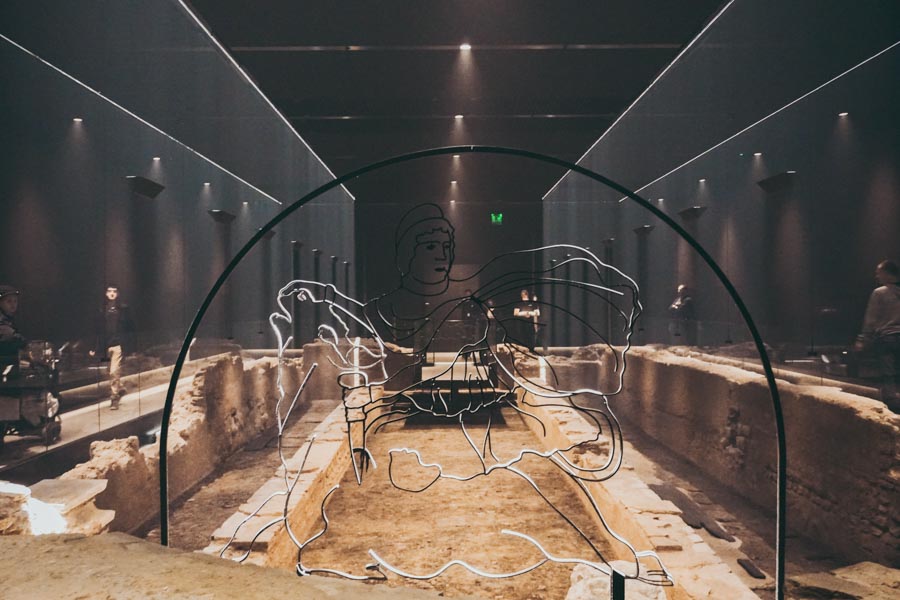
Love This? Save and Share!
London’s history stretches way back – including to Londinium – the ancient Roman city that stood where the City of London does today. Ready to discover the remains of Roman London? Let’s explore.
Hidden amidst the streets of London, you’ll find the ancient ruins of the Roman Empire that formed the foundation of what the City of London is today.
Believe it or not, you can still take to the streets and see some of these ancient wonders with your own eyes.
From the ruins of the Temple of Mithras to the wall the Romans erected to protect it, the remains of Roman London sit between the city’s skyscrapers and contemporary buildings. They can be a little hard to find… that is unless you know where to look.
Where to Find Roman London
London mithraeum .
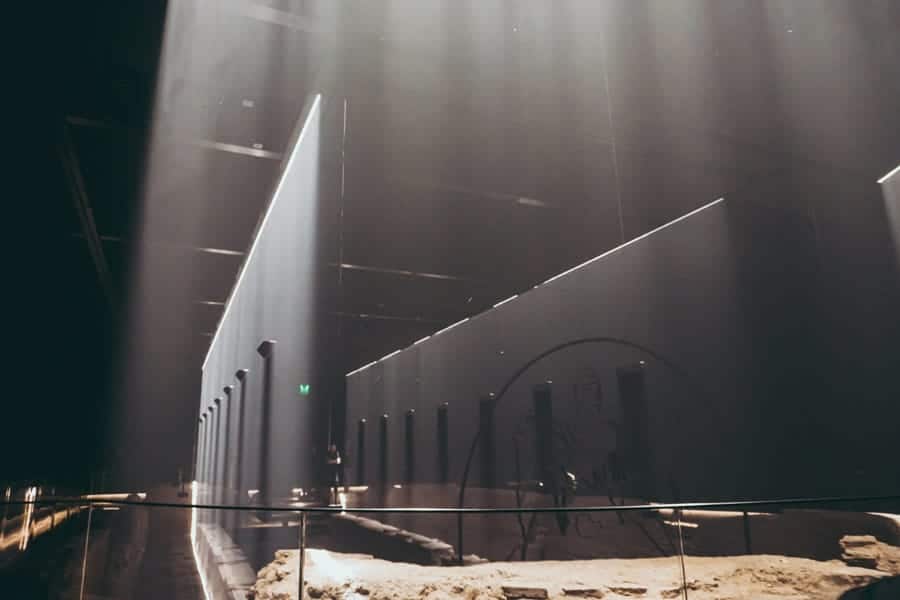
The Temple of Mithras was just one of the temples in Londinium, but historians think that it was also one of the most significant in the city.
Construction workers discovered the Temple in the 1950s, alongside an elaborate collection of different statues and trinkets of tribute while doing construction work in the area. The location of the ruins has changed twice because of this.
The first was pretty much as soon as it was discovered. Due to the importance of the building that was underway, the city delicately moved the structure to a new location in Queen Victoria Street, Temple Court.
It moved for a second time when the media giant Bloomberg built their European headquarters on the temple’s original location. Upon learning this, Bloomberg decided to transport the ruins back to their original location and rebuild the temple.
The ruins are open to the public and free to see. You can book a ticket through the Bloomberg Space and London Mithraeum website .
The headquarters also show some of the different artefacts discovered during the uncovering of the ruins of the temple.
London Wall
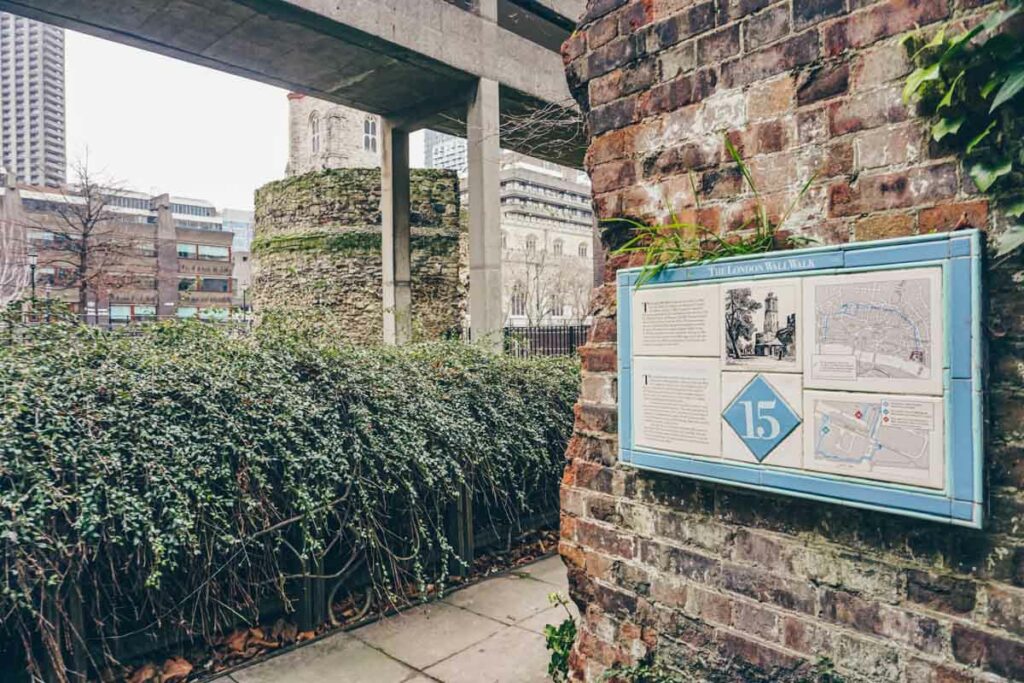
The Museum of London is one of our favourite free museums – a special place that houses thousands of different artefacts from cultures around the world, but there is a piece of Roman history surrounding it.
Take a walk around the outside of the museum, and you will find the remnants of a 5km-long piece of wall that the Romans built to encircle Londinium – imaginatively called London Wall .
This thick wall stands 6 metres tall and measures 2.5 metres wide. Its purpose was to protect the city over two thousand years ago.
Today, there are only a small amount of pieces that are still left. You will find other pieces near the underground station for Tower Hill and close to the Underground station for Barbican, on the Barbican Estate. But you will find the biggest piece of the Roman wall outside the museum.
Sadly, the rest of the wall has been destroyed, buried, or removed over the years with the rapid expansion and development of the City of London .
London Wall Road shows a different perspective of where the wall used to sit. This road mimics the north part of the wall and where it ran along the city’s edge.
Billingsgate Roman House and Baths
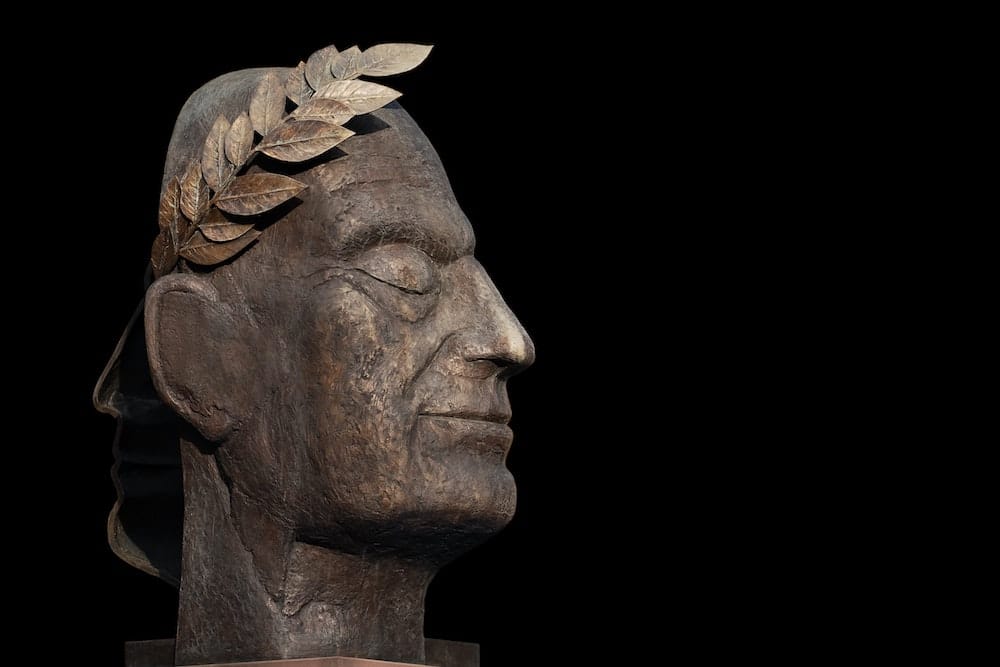
The Billingsgate Bath House is a 2,000-year-old ruin, discovered in 1848.
The artefacts inside show that it was built in the 2nd century on the bank of the River Thames, with a lovely waterfront view.
The Romans used it right up until they abandoned Londinium. This spectacular ruin even showcases modern features like underfloor heating.
You can walk to Lower Thames Street to experience this marvel of how the Roman British lived back then. It is one of the top examples of the style and type of Roman buildings within the capital.
The ruins were hidden from the public for a long time, in the cellar of a Coal Exchange building. Then the city destroyed this building to make way for another new development.
During this time, more excavations were undertaken and kept again in the cellar of the new building on Lower Thames Street.
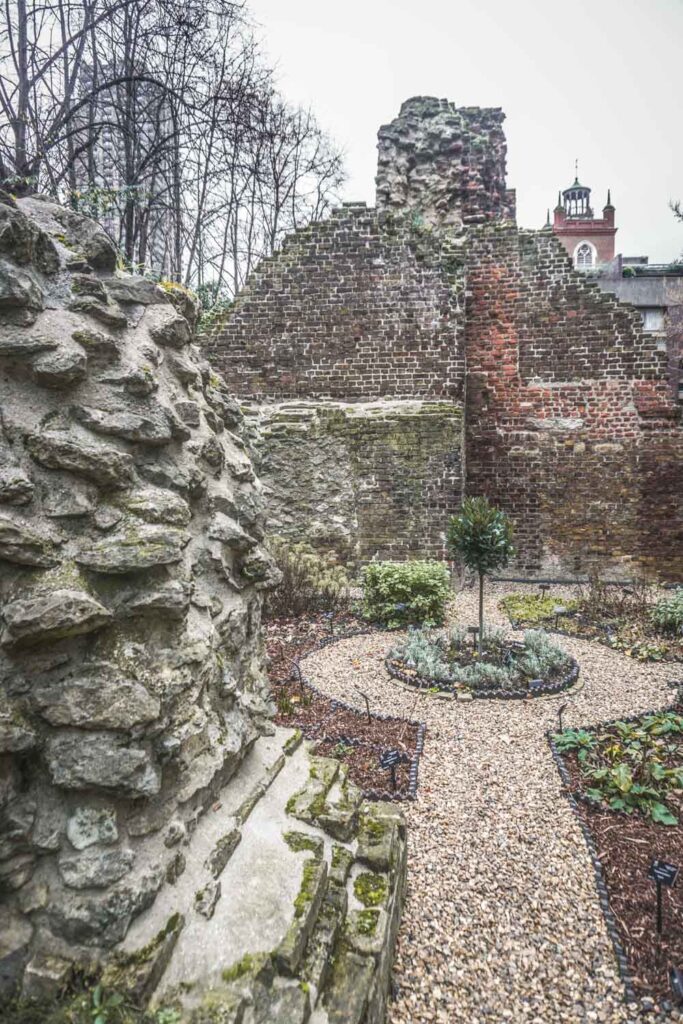
When the Romans were on their conquest of Britain, forts were the standard to protect their new settlements. The Fort of Londinium was built around 120 AD after local tribes burnt the original city to the ground.
The fort was built on the outskirts of the city and spanned an impressive 12 acres. Over the years, the city of Londinium grew. The fort was absorbed into the construction of the protective wall that encircled the city.
The military later decommissioned the fort as it was no longer needed — with stability coming to the region. A few pieces of the western and northern edges of the fort remain today within the Museum of London grounds.
Roman Amphitheatre of Londinium
View this post on Instagram A post shared by Guildhall Art Gallery (@guildhallartlondon)
Hidden in a vault under the Guildhall gallery are the remains of the Roman Londinium amphitheatre.
A group of archaeologists from the Museum of London discovered the remains while planning a new gallery project. The moment the archaeologists uncovered the ruins, they became a protected monument.
Originally made out of wood, during the 2nd century the structure underwent a renovation with a tiled entryway and stone walls added.
It could hold a few thousand visitors and the Romans used it for a variety of events, ranging from the infamous gladiator games to religious events and even executions.
These are the most impressive of all the Roman ruins in London, and they are free to visit during the gallery’s opening hours. If you stand in the courtyard above ground, there is an outline of the perimeter of the structure laid out in grey stone paving to show the sheer scale of it.
A Wharf Pilon from the Romans
View this post on Instagram A post shared by St Magnus the Martyr, London. (@stmagnusthemartyrlondon)
Nestled in St Magnus, the Martyr church is a real Roman pilon dating back to the Roman period and still standing today. It is within the entry point of the church, below the bell tower. This pilon forms an integral part of what used to be the riverside wall along the river.
Builders discovered the pilon in 1931 when they were digging foundations for a building nearby.
A scientific study was done on the wood, and it was dated to roughly 75AD. It is incredible how a piece of wood has survived thousands of years.
A Recent Discovery
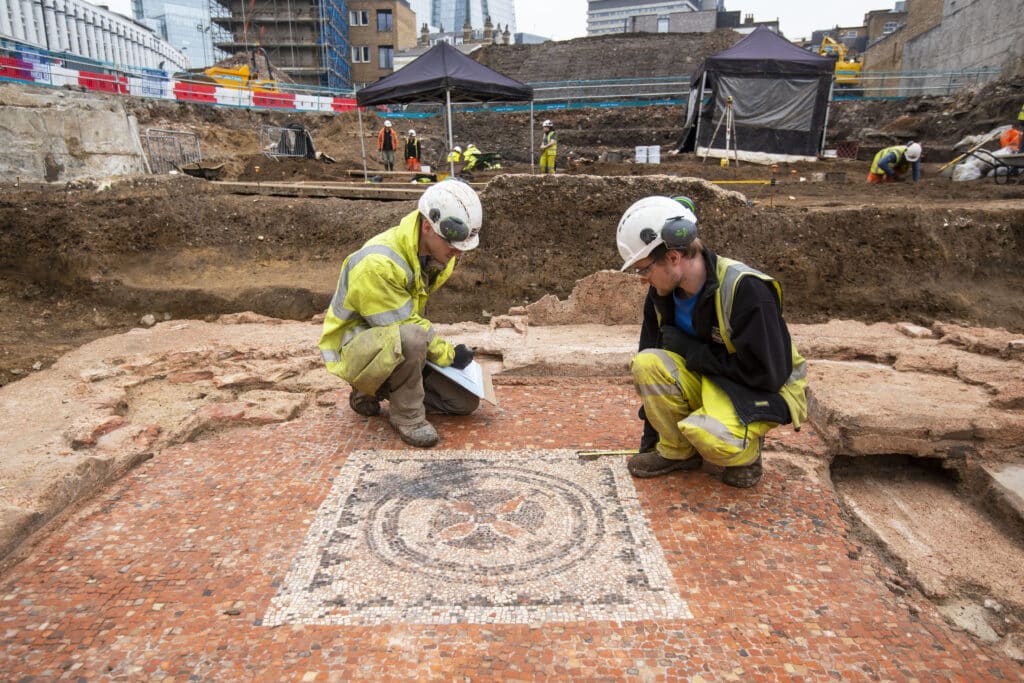
The summer of 2023 turned up a pretty interesting find for Roman-London enthusiasts . While digging around the site of The Liberty of Southwark site – where some fantastic mosaics were found previously – a fantastic example of a Roman mausoleum was discovered.
It’s said to be the best-preserved Roman mausoleum in the UK, but don’t expect to see much of a structure. The best part of it has long been pulled down, likely by Londoners in the middle ages.
What remains has been slated for public viewing once the Liberty of Southwark site is completed.
Roman London Walk
The best way to experience all of these things — and more — is to take a Roman London walking tour. This will take you to the sites above and provide you with a guide who can also inform you about all the unique aspects of the ruins.
Much of the remains are 7 metres below ground so you have to know where to look. Here is an outline of a path to follow.
London Wall at Tower Hill
The walk will take around three hours from start to finish with Tower Hill being the best place to start, where you will see your first piece of the London Wall. Take the underground to Tower Hill station and just outside will be a large chunk of the wall.
Billingsgate Baths on Lower Thames Street
View this post on Instagram A post shared by Visit the City of London (@visitthecity)
Take a stroll down Lower Thames Street towards the London Bridge and stop at the Roman Baths next to St Dunstan’s Hill. Not too far away from where you started.
London Mithraeum on Walbrook

Further down the road, opposite the Cannon Street Station and in the Bloomberg Building, is the London Mithraeum, where you can marvel at the ruins of the Roman Temple. Granted, this is a bit more of a walk to get to here but your feet won’t get too tired.
Londinium Amphitheatre At Guildhall Gallery
A short walk up King Street will take you straight to the incredible Amphitheatre ruins of Roman Londinium.
Museum of London on London Wall Street
View this post on Instagram A post shared by Museum of London (@museumoflondon)
Just up the road will be the end of your walk at the London Museum. Here you will find the remains of a large piece of the London Wall and the ruins of the Roman Fort that once stood there. End of your walking tour with a simple and relaxing walk along the London Wall Road to trace the original wall location and take you back to Tower Hill.
Feel like exploring all the ruins? Well, the good news is that there is a walking tour to show you the remains of Roman Londinium and provide expert knowledge while doing it. There are also a few extra hidden Roman ruins that you might not have heard of before on this walking tour of Roman Londinium .
A Brief History of Londinium
The history of Roman London is quite long – so we’re giving you the short version here.
During the Roman period, Londinium was known as Roman Britain’s capital. The original area — first built in 47AD — was only a settlement, sitting on what is today the City of London.
Londinium’s Importance
It was a strategic settlement, located at an important point to cross over the Thames. This made it an important port serving as a commercial epicentre for the Roman Empire on the British island.
There has been a bridge at this important crossing point ever since in one form or another. The Romans built the Roman London Bridge to take Londinium citizens over the River Thames.
Archaeologists discovered the foundations of a substantial pier foundation in the early 1980’s close to the London Bridge.
The Rebuilding of Roman London
A coalition of local tribes destroyed the original settlement during an uprising, but the Romans rebuilt the city after. Romans built the new city according to the standard Roman philosophy of a grid layout, and by 225 AD, they encased it within a wall.
The Roman London wall still exists today, and pieces of it still hold the City of London within it.
The Fall of Londinium
The city hit its peak in the 2nd century, but the status of Londinium started to fall in the 5th century. During this time, the Roman Empire began to weaken after the Barbarians invaded Roman territories and other major cities of the Roman Empire cut communications.
Londinium was effectively abandoned and fell into a state of disrepair.
It only became relevant once again during King Alfred’s reign, where the city was used to protect the countrymen from the invading Vikings. At this time, the name was also changed to Lundenburg.
Map of Roman Ruins in London
Looking For More Historical London Guides?
- Explore London’s Oldest Buildings
- Why You Really Need to Visit the London Mithraeum
- A Walk Along The Old London Wall

LET'S GET SOCIAL!
London x London is the insider’s guide to discovering the best of London.
We delve into the cool, interesting and quirky spots that make London such a dynamic city, telling you the best things to do, eat and drink along the way.
Tired of the same old dull suggestions? Want to know where to find London’s secret bars, tastiest eats and weirdest finds? We provide practical guides that help you do just that.
Find Out More
Recently Published
- Eltham Palace: Discovering South London’s Gorgeous Art Deco Secret
- Staying At: The Laslett, Notting Hill Review
- Carreras Cigarette Factory: A Curious Reminder of London’s Egyptian Art Deco Craze

London Guided Walks » Roman London Walk
Roman London Walk
Step into Londinium see hugely impressive remains and hear stories of the first Londoners.
- Discover Roman London in the City of London
- Learn how Londinium was created and deserted
- Qualified City of London guide

Book with confidence:
- Book online 24/7
- Secure Payments
- Immediate Booking Confirmation
Explore London’s origins on this ninety-minute walk through the heart of the Roman city. We will look at both hugely impressive remains, and intriguing smaller parts of Londinium that most people just don’t know about.
We will look at why the city grew where it did, meet some of its inhabitants, and find out how it later became almost empty.
The sheer size of Roman London was truly impressive. Come along and discover the monumental history hidden beneath our feet.
- Start: Tower Hill
- End: Guildhall
- Suitable for 14yrs+

Your Guide: Jenny Funnell
Roman London Walk Reviews
Qualified London Tour Guides

All Upcoming Guided Walks

Guide To Roman London, Roman Ruins From Londinium
This is the ultimate guide to immersing yourself in the many attractions of Roman London.
The history of London is one of invasion and conquering. Apart form prehistoric tribes, the Romans were the first to takeover. Indeed, the Romans named the country “Britainia” and its capital city “Londinium.”
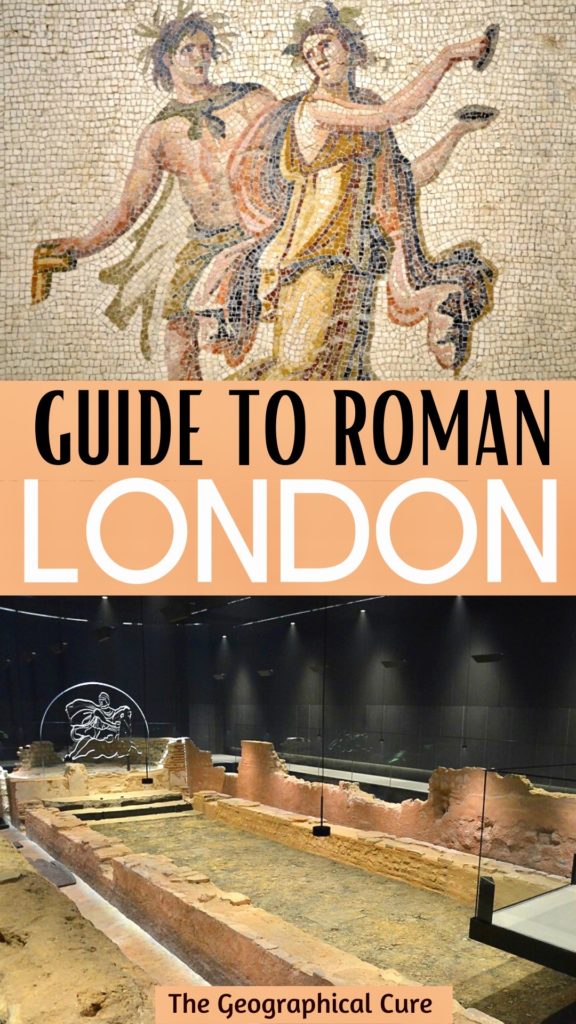
History of Roman London: What Was Londinium?
One doesn’t typically think of London as a place to discover Roman ruins. But, in fact, Julius Caesar and the Roman Empire swept through Britain in 50 B.C.
Caesar landed in the county of Kent in southeast England, but found little there of note and headed home. However, in 43 A.D., Claudius was of a different mind.
He moved in and established a city known as Londinium , which covered 3,000 acres in what is now central London. Because of its strategic position on the Thames River, it became one of ancient Rome’s most important outposts.
The first thing the Romans did was build a bridge over the Thames, near the site of the current London Bridge.
What the Romans didn’t count on was decades of fierce resistance by the local clans. In 60 A.D., the warrior queen Boudicca had had enough.
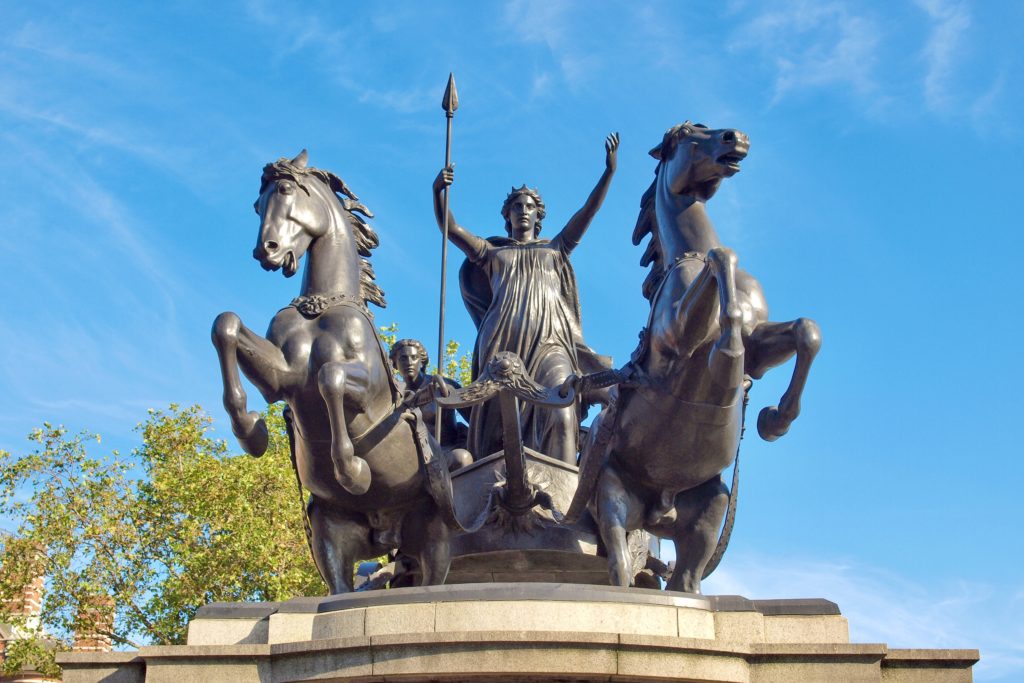
The Roman grossly mistreatment her family and stole their property. She was beaten and her daughters raped.
Boudicca staged an uprising and burned Londinium to the ground, killing an estimated 70,000 Romans. The Roman governor, Suetonius Paulinus, launched a counterattack and defeated the rebels. Boudicca committed suicide, rather than be captured.
If you want to pay homage to one of history’s great figures, there’s an imposing statue of Boudicca at the northern end of Westminster Bridge.
In 70 A.D., the Roman embarked on a massive reconstruction. They built a fort that could accommodate up to 1,000 troops. It covered 12 acres and was square in size.
Around 190, during the reign of Severus, Rome further defended its turf by building massive city walls They were made with a hard bricks quarried near Maidstone in Kent. Originally, 7 gates controlled access and egress to the city.
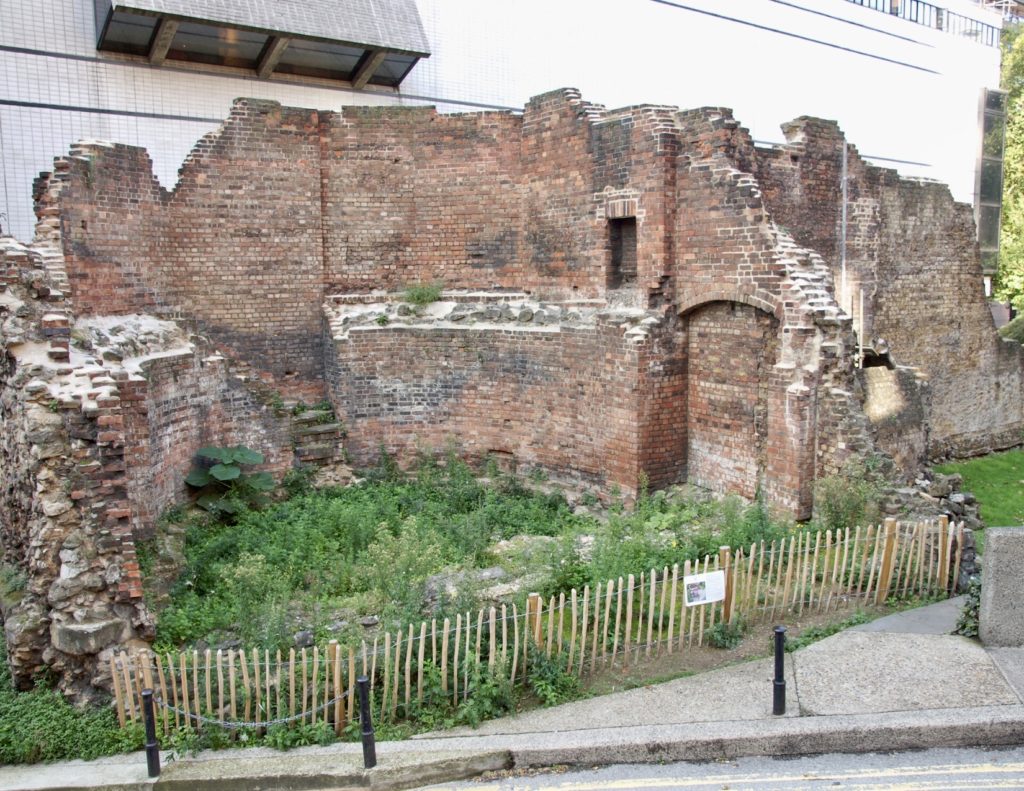
By the start of the 3rd century, London was completely “Romanized.” Londinium was the hub for a lucrative trade with the continent and a commercial capital with over 45,000 residents. Emperor Gratin renamed Londinum “Augusta,” an honorific referring to the Rome’s first emperor.
In the 4th century, the Roman Empire began to crumble. It was suffering from a mix of ailments — barbarian incursions, military overspending, territorial over-expansion, political instability, social inequality, and over-dependence on slaves.
As Rome’s prospects floundered, so too did Londinium’s. In 410, Emperor Honoruius ordered all Roman troops to return to Rome. Left to their own defenses, the citizens fell prey to the Saxons’ hostile attacks.
By the 5th century, the city of Londinium was largely abandoned. Over time, the ruins were buried under layers of soil and new buildings.
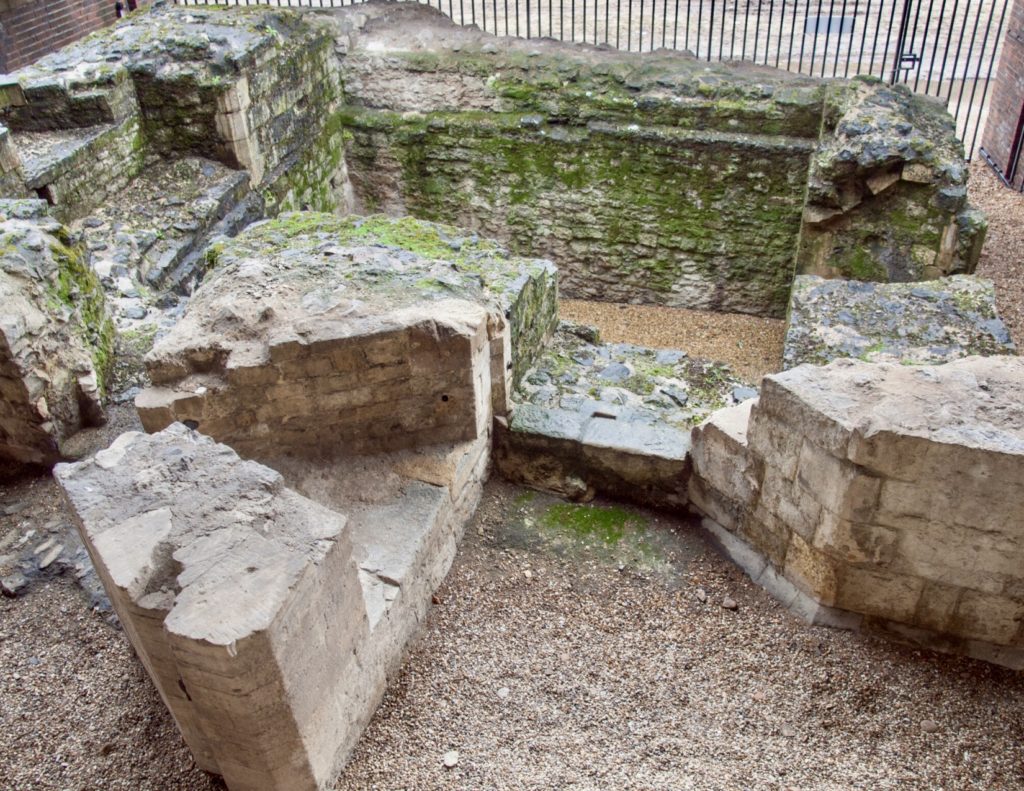
Guide To Roman London: Where To See Roman Ruins
Now, for the good stuff. If you’re a history lover like me, you’ll be happy to know that London has quite a few remnants of Roman sites.
Let’s step back in time and see where to find Roman London.
If this virtual tour inspires you to visit London’s medieval attractions, you can book a 3 hour guided tour of Roman London to see them in real life.
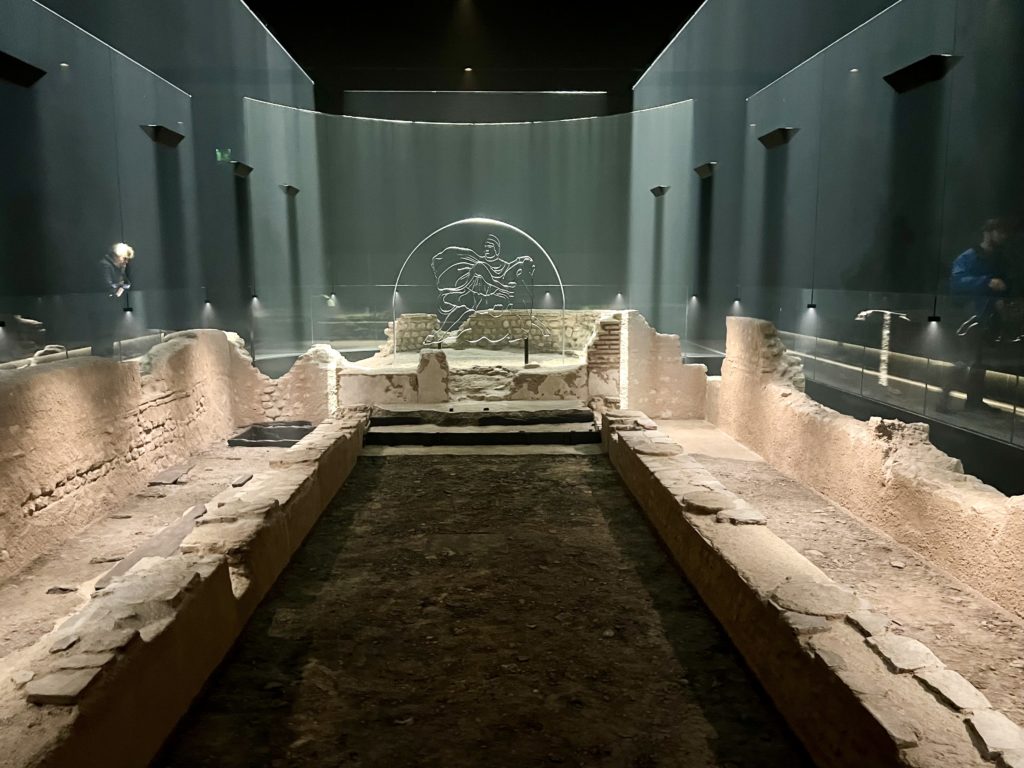
1. London Mithraeum
The Roman Temple of Mithras is a Roman temple in the center of London and it is completely free to visit. It’s one of Britain’s most important archaeological sites, one of only a 100 Mithraic temples found from Ancient Rome .
The Christian-style pagan temple was discovered in 1954. As part of the Bloomberg Project, it was excavated in 2010-14 and moved inside to a safe and publicly accessible space.
Very little is known about the Roman cult of Mithras and its rituals. The cult’s central icon is an image of Mithras killing a bull, which has been interpreted as a creation myth.
You’ll see the reconstructed temple and a remarkable collection of artifacts uncovered during excavation. Free guided tours leave every 20 minutes. There’s an exhibition space with information while you wait for your turn.
Here’s my complete guide to the London Mithraeum .

2. Billingsgate Roman Bath House
Another Roman site is the Billingsgate Roman Bath House . Like the Mithraeum, it was part of ancient Londinium.
You’ll find it underneath an office complex on Lower Thames Street. The bath house was abandoned after the fall of Rome.
First discovered in 1848, the ruins were once an impressive bath house with a courtyard and underfloor heating. The best preserved part of the ruins is a hot bath with hypocausts, which were used for heating the room.
Artifacts discovered during excavations are in the Museum of London, site in Roman London that I discuss below.
The site opens to the public on Saturdays via guided tours. You can also visit this site on a tour of Roman London .
Address : 101 Lower Thames Street
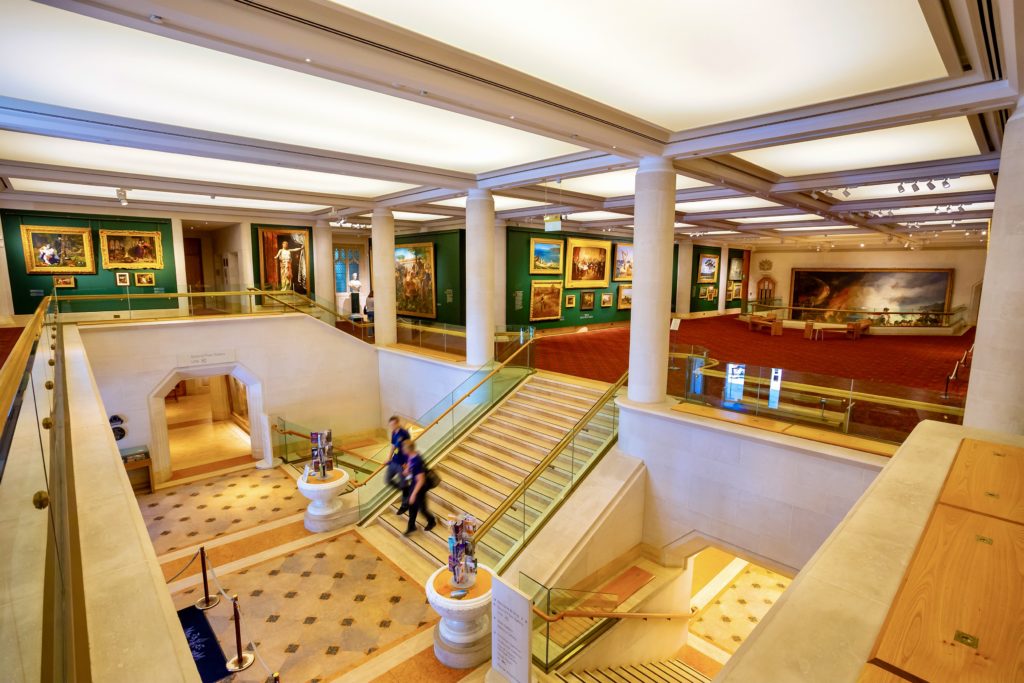
3. Amphitheatre – London Guildhall
In 1985, the city of London began constructing an art gallery associated with the Guildhall building from Medieval London . It wasn’t long until construction unearthed the 2,000 year old ruins of the only Roman amphitheater in Londinium.
Like most Roman amphitheaters, it was used for entertainment, including gladiatorial fights, animal fights, and executions. As proof of this, the archaeologists found skeletons of humans, a bear, a bull.
The amphitheater likely had an elliptical shape and a seating capacity of 7,000 spectators.
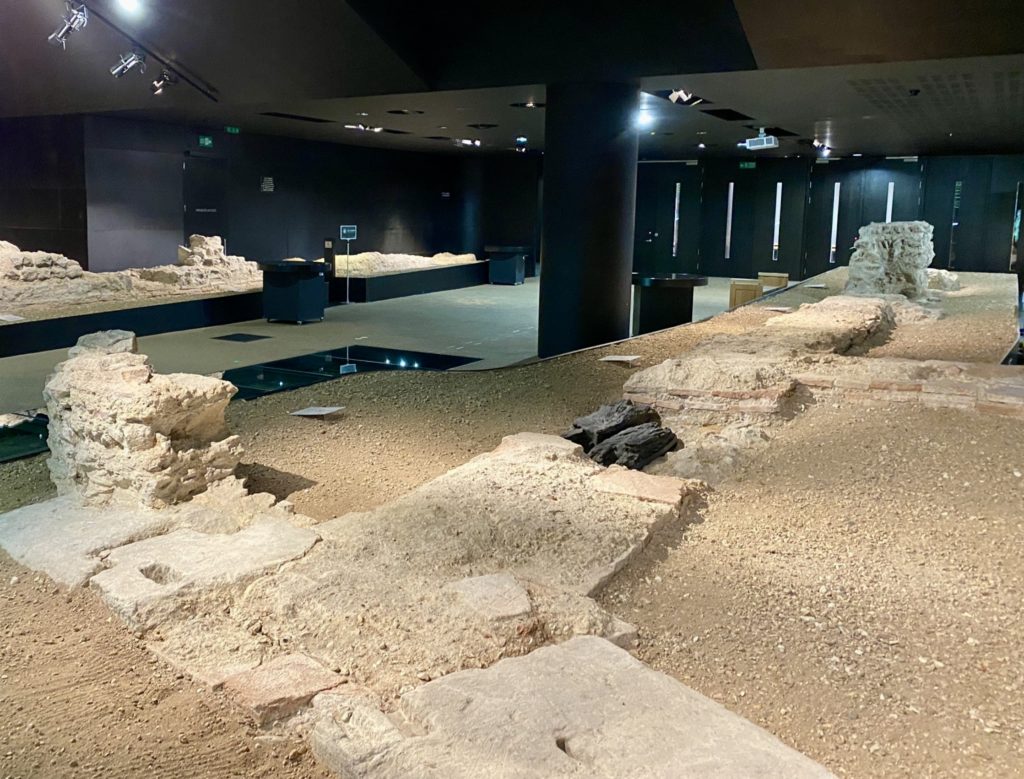
Construction proceeded carefully. The amphitheater ruins were incorporated into the design of the new art gallery and are now on permanent exhibition. They are also free to visit during gallery hours.
The ruins are 26 feet below ground level. A digital projection recreates the layout of the amphitheater. There are also artifacts on display at the gallery.
Outside, a large circular line in dark stone was paved into Guildhall Yard to mark the outline of the amphitheater below.
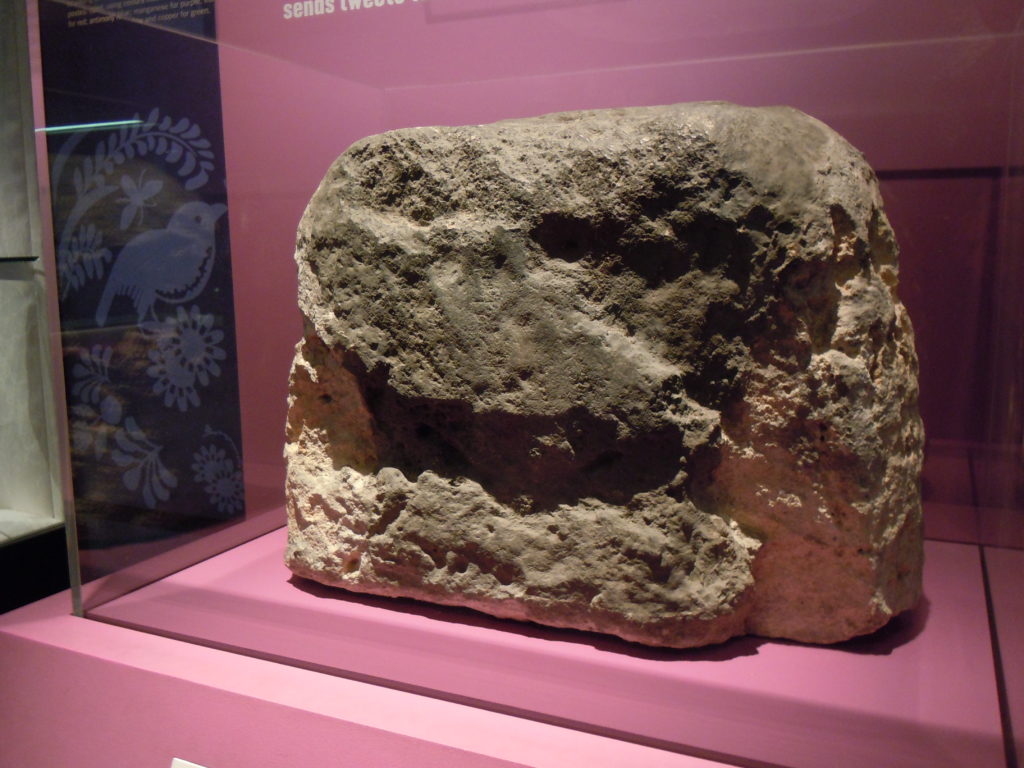
4. London Stone
The London Stone is stored in a glass covered cubbyhole in the wall of the modern Bank of China. It’s a miliary, or milestone, that was used to measure distances of Roman roads. Or at least it had some use in transportation.
Like most ancient things in London, the stone has been associated with King Arthur.
Legend also holds that in 1450, Jake Cade, leader of a rebellion against Henry VI, struck his sword against it and declared himself “Lord of the City.” The event was dramatized in Shakespeare’s play Henry VI .
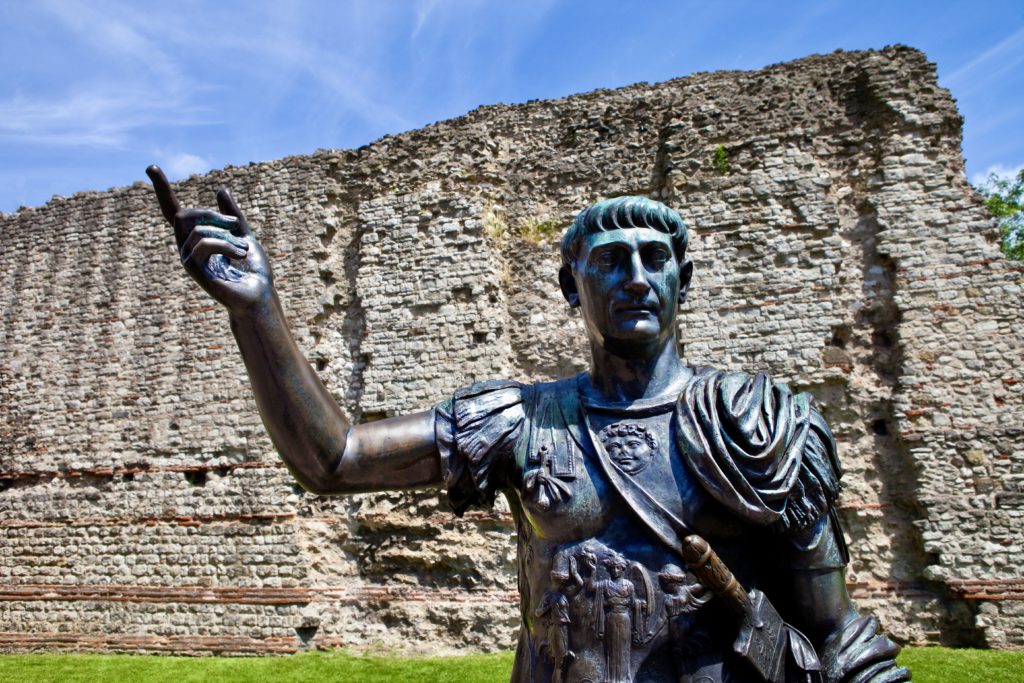
5. London Wall
Did you know you can walk along the ancient Roman Walls? They were built by the Emperor Claudius Albinus in the 2nd and 3rd century A.D. The walls continued to be expanded until the end of Roman London.
In 1984, the Museum of London put together a self-guided walking route of the remaining sections of the wall. You can actually buy a book describing the walk at either the Museum of London or the Guildhall.
It’s a 1.75 mile walk with 21 sites that starts at the Tower of London and ends at the Museum of London. It will give you a sense of the boundaries of Roman London.
If you’re visiting the Tower of London, I would do that in the morning. Then, in the afternoon do the wall walk to the Museum of London and see some other Roman goodies on display there.
Be forewarned, parts of the walk are in a high traffic area. There used to be 21 plaques explaining the sites, but many of them are missing now.
The best preserved section of the Roman London Wall is an impressive 110 foot long chunk on Tower Hill near the Tower of London. The wall was likely over 20 feet tall in this spot. The ruins come complete with with a statue of Emperor Trajan.
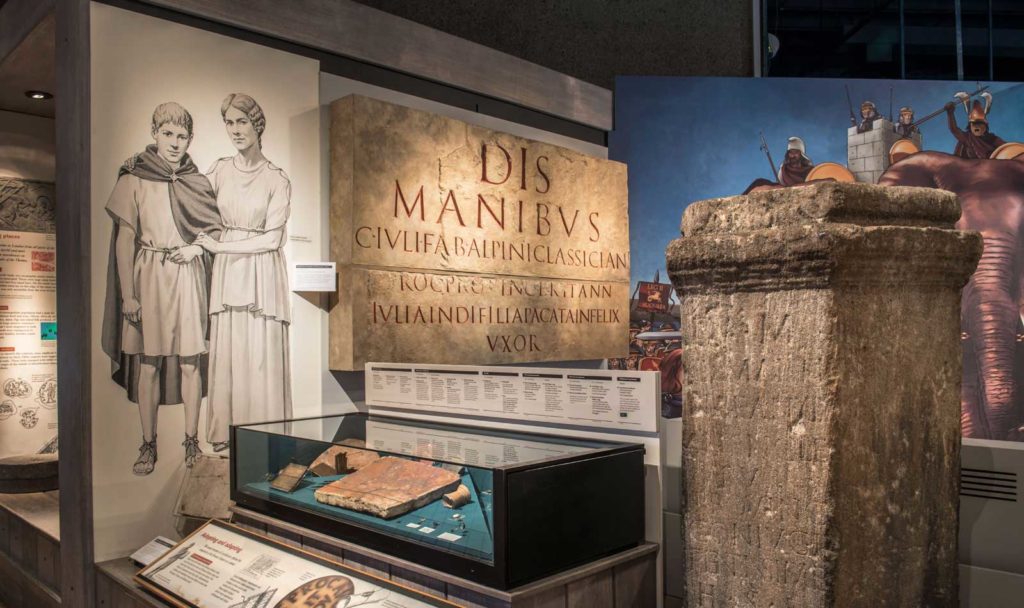

6. Museum of London
No tour of Roman London would be complete without a visit to the Museum of London . It’s an under-appreciated city gem with a cache of Roman goodies.
The museum takes you on a journey of the history of London, from its prehistoric first settlers around 450,000 B.C. to today’s contemporary multicultural hub.
You’ll get some fascinating insight into Roman London, from over 2,000 years ago. The Roman collection has more than 47,000 objects, including Roman mosaics, tombstones, coins, and leatherwork.
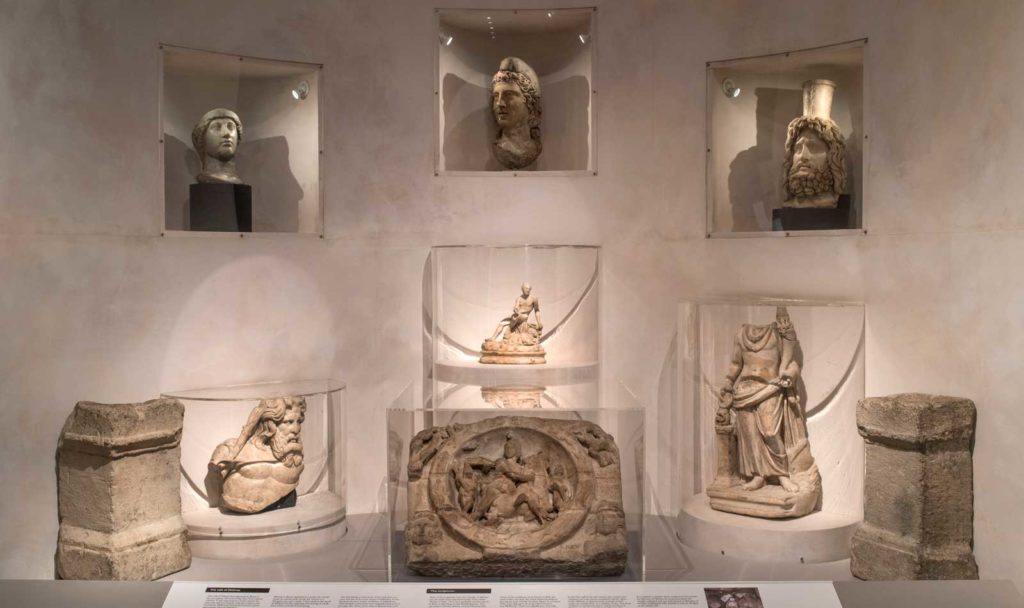
The museum also houses artifacts excavated from the Mithraeum I discussed above, including the statuary heads of Mithras, Minerva, Serapis, Bacchus, and Cautopates.
From an observation deck, you can see a major section of the Roman wall. It’s placed under glass, so that you can look at the wall up close.
You can also see reproductions of the Roman gates, torn down in the 18th century, that were part of the city wall.
The museum also has an original bronze bust of Hadrian, a Roman girls leather bikini, and dioramas the bring to life a Roman family’s kitchen spaces.
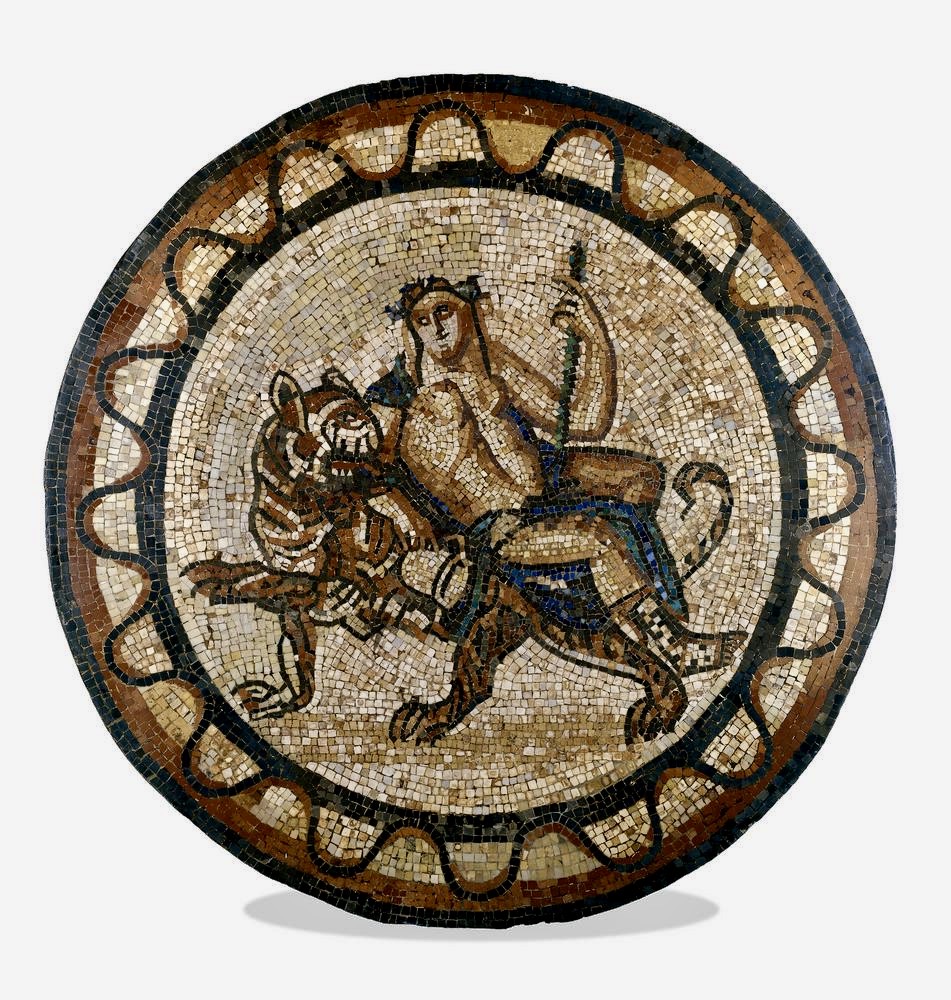
7. British Museum
The British Museum is also a must visit on a tour of Roman London. It has a fascinating array of Roman art on its second floor. There are hundreds of imperial busts.
If, like me, you’re fascinated with the Roman emperors, you can go emperor spotting in Room 70 and meet everyone from Augustus to Caracalla.
The British Museum also houses a rare Roman mosaic. With brilliant amber and yellow mosaics, it portrays Bacchus, the god of wine, seated upon a panther.
If you want to take a deep dive into all the museum’s ancient collections, you can book a 2 hour guided tour of the British Museum or a 2.5 hour private tour .
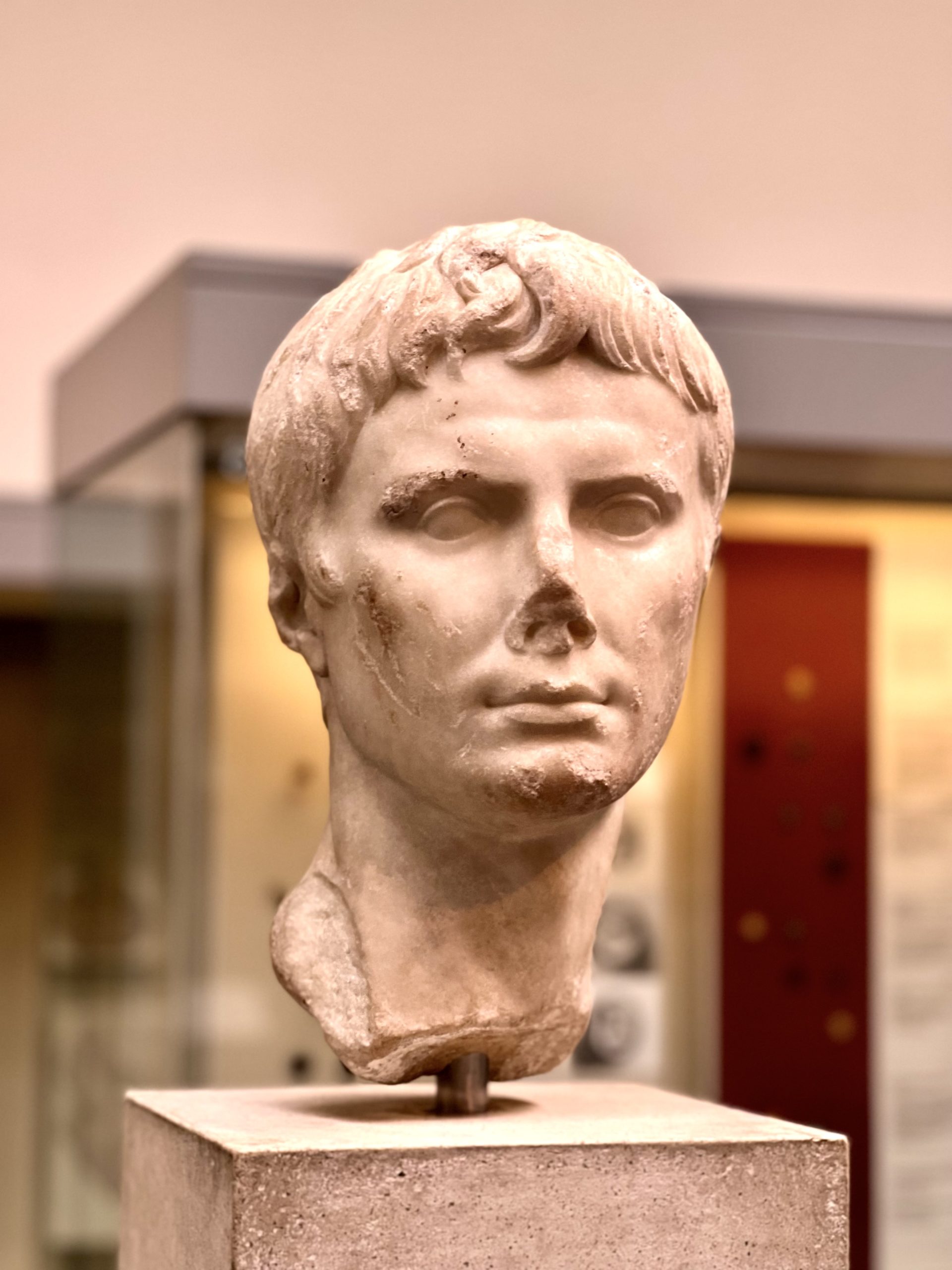
8. Roman Mosaic in Southwark
In January 2022, archaeologists from the Museum of London Archaeology uncovered a spectacular ancient Roman mosaic in the Southwark neighborhood. It’s the largest one found in the last 50 years and is quite well preserved.
Described as a once-in-a-lifetime find, the mosaic likely dates to the late 2nd or 3rd century A.D.
It’s comprised of two intricately decorated panels, the larger of which measures almost ten feet long. They have geometric motifs in red, white, and black and Solomon’s knots made of two interlaced loops.
Judging by its size and the complexity of the design, archaeologists suspect it was from a dining room in a wealthy Roman house. Alternatively, it might have been a “mansion,” a resting spot to entertain high ranking travelers.
The long term plan is for the mosaics to be put on display.
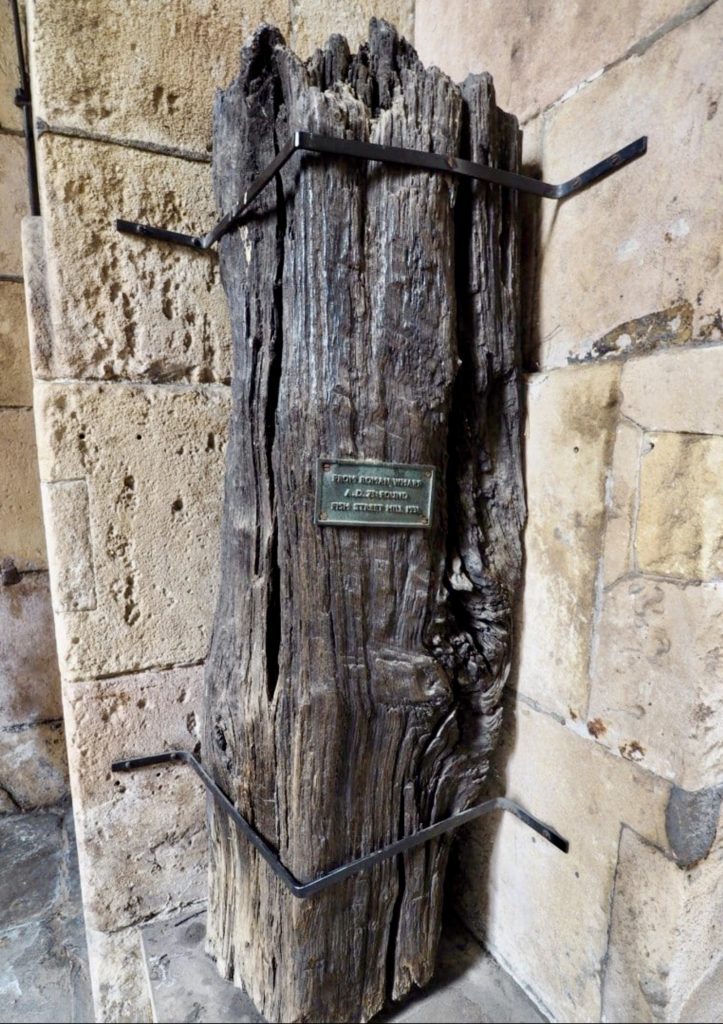
9. St. Magnus Martyr
The small church of St Magnus-the-Martyr on Lower Thames Street has a 2,000 year old piece of wood from an old Roman wharf.
It’s a pilon that was an integral part of the former riverside wall along the Thames. A small plaque attached to the timber claims it is from 75 A.D.
The timber was discovered on Fish Street Hill in 1931. It’s located inside the tower of St. Magnus. Visitors will also find an incredibly detailed, 13 foot long model of the medieval London Bridge in the church.
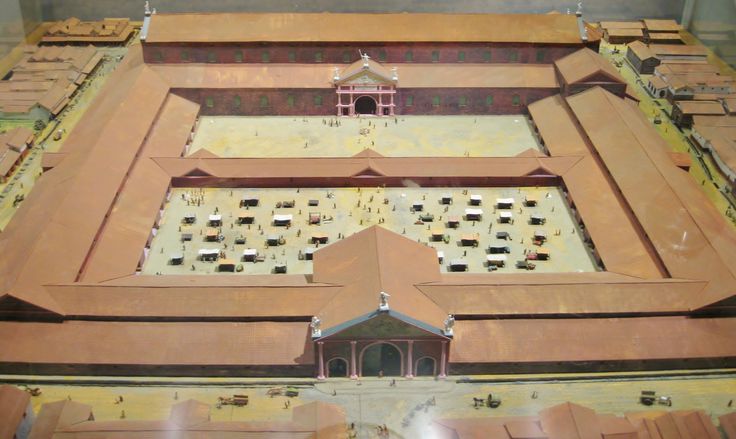
10. London’s Roman Basilica And Forum
Built in 70 and expanded until 130, the Roman Basilica was the civic center of Roman London. It was a public building that once housed administrators, law courts, an assembly hall, the treasury, and shrines.
The basilica was completely lost to history until the construction of Leadenhall Market in the Victorian era.
Today, the excavated remains are housed in the basement of a barber’s shop underneath Leadenhall Market. Stairs take you down to the lower level. You’ll see a pier that served as the base of an arch in one of the basilica’s arcades.
I hope you’ve enjoyed my guide to Roman London. You may enjoy these other London travel guides and resources:
- 3 Day Itinerary for London
- 5 Day Itinerary for London
- Hidden Gems in London
- 30 Day Trips from London
- Tourist Traps To Avoid in London
- Best Castles in England
- Best Museums in London
- Harry Potter Places in London
- Guide to Westminster Abbey
- Guide to St. Paul’s Cathedral
If you’d like to discover Roman London, pin it for later.
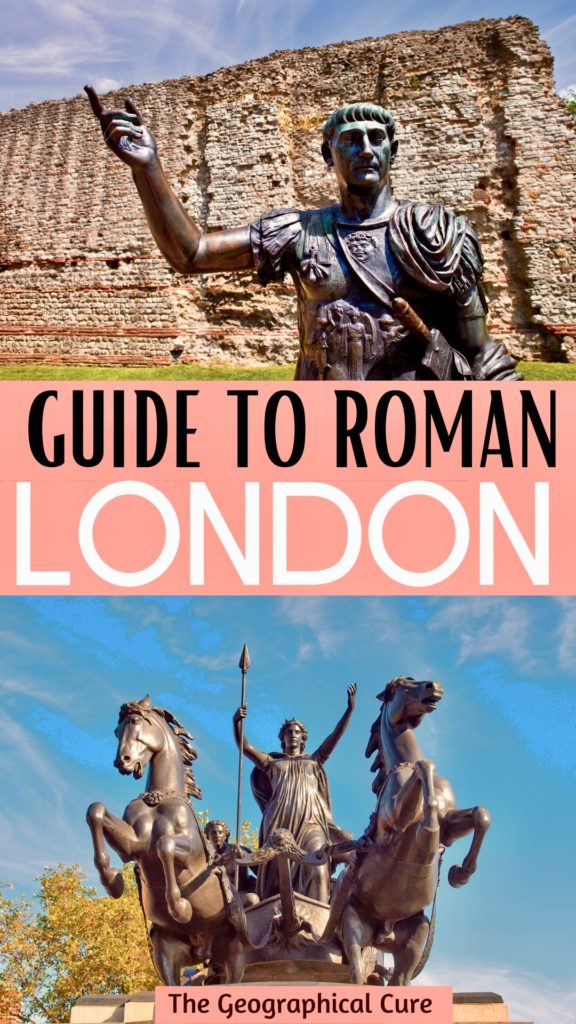
Leave a Comment Cancel reply
Save my name, email, and website in this browser for the next time I comment.
Last Updated on July 4, 2023 by Leslie Livingston

Roman London
Who knew ..., date and time.
Londinium: Explore The Remains Of Roman London

Craig ’s review… The idea behind this walk is that we are going to be transported back in time to the year 50 AD, when the Romans first came to town and started building the wall. I have tried to include every little brick and piece of mortar that still exists from Roman times and lots of interesting sights and landmarks as well, because no one wants to look at a load of boring bricks all day. So it should be good.
Oh yeah… and before we start I need to tell you something. In order to get the most out of this walk you will need to dress up as a Roman (I’m being serious). So that means hiring a toga and a pair of sandals from the fancy dress shop. If you can get hold of a slave to boss around as well, then that will be perfect. I know that slavery is frowned upon these days, but who cares – let’s do it anyway! It doesn’t do them any harm does it. It’s not like we are going to whip them (that is optional). I am definitely going to whip mine, but I will leave that up to you.
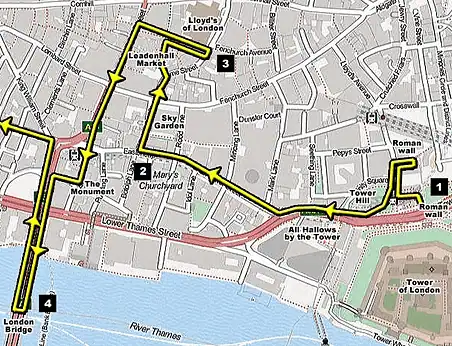
Let’s begin the day outside Tower Hill train station [see 1 on the map]. Right beside the front door is a huge chunk of the city wall that towers eight metres above your head (the roman bit only goes up to the first four metres). They’ve also got a big statue of the Emperor Trajan there pointing to the train station for some reason. Look for the plaque on the wall which provides a little bit of info about how the wall was constructed. It also shows you a map of where the entire wall used to run. Sadly practically all of it has disappeared now apart from this bit, a bit further north, and some big chunks by the Barbican – and we will visit all of them before the day is out.
To get to the next section you need to walk through to the other side of the station and turn right past Trinity Square Gardens. Keep walking for a tiny bit up Trinity Square and Cooper’s Row and keep your eyes open for the Grange City Hotel (it’s only a very short distance). You need to turn right into a courtyard at the Grange City Hotel. If you do it right then get ready to be impressed – this is easily the prettiest piece of wall still standing.
After that we’ll double back and enter Trinity Square Gardens. You get quite a nice view of the Tower of London from here, and if you head over to the far corner and search around for a bit, then you should come across the spot where they killed all of the traitors. This place is called Tower Hill , and you are standing on the exact same spot where they set up the axe and the gallows and thousands of people would gather around shouting and screaming for the drop. There’s a little plaque in the ground that lists all of the traitors’ names – famous names like Thomas Cromwell, Thomas More and the Earl of Essex.
But wait a minute… what has any of this got to do with Roman London? Absolutely nothing! But it’s still interesting nonetheless. But this next bit is definitely worth a look because you’ll get to see your first piece of Roman pavement. Can you see that church across the road with a green steeple? That is All Hallows-by-the-Tower . Have a nose around inside there and find a little flight of stairs at the back. This will take you down into a tiny little crypt. This is probably the last place that you’d expect to see some Roman stuff, but they’ve got a little museum down there with inscriptions and bowls and a big piece of mosaic pavement that is still in situ.
Once you’ve had a good look at that, keep moving down Byward Street, Great Tower Street and Eastcheap. As you walk down the road remember to look left across St. Dunstan’s Hill and St. Mary-at-Hill… because the Shard keeps popping up between the buildings. Turn right into Philpot Lane [see 2 on the map].
It was at this point that I stopped for my first coffee break. I’d only been walking for fifteen minutes but that was enough for me – it was teatime. I’ve got a thing about drinking posh coffees at those high street coffee shops at the moment – the ones that take about ten minutes to brew and end up costing you two weeks wages. There’s a coffee shop on the corner of Philpot Lane if you want to follow in my footsteps. Ask for a medium latte – because that’s what I had. And sit in the seat by the door too, and then you will have exactly the same experience as me. Remember to spill a bit of coffee on the table too, because that’s what I did.
Tea break over, head up Philpot Lane and one of London’s tallest skyscrapers will be towering over your head – the Walkie Scorchie. A few weeks after this was opened it famously started to melt all of the cars in the road below, because the curved glass focused all of the sun’s rays into the street. So if it’s sunny be extremely careful down here – I don’t want you bursting into flames (I won’t be liable for that, by the way, so you can’t sue me). There’s a tropical garden on the 35th floor called the Sky Garden that you can visit for free (as long as you print off a ticket on their website first). If you’re reading this in advance then I definitely recommend giving it a go just for the views alone.
Cross over the road at the end of Philpot Lane and enter Leadenhall Market . If you’ve never seen this place before then you’re in for a treat. It’s an old Victorian market with fantastic ironwork and red and gold gildings.
1,950 years ago we would have been standing right in the middle of the Roman Basilica, but nothing remains of it above ground today. Not unless you include a shop that sells spaghetti.
I’m going to make the route a bit confusing now… but I think you can handle it. One of the cross roads that leads out of Leadenhall Market is called Leadenhall Place. Walk to the end of that road and look left – I absolutely love this view. You are looking at Lloyds of London and the Gherkin [see 3 on the map]. Apparently the Romans were quite fond of eating gherkins, so that does at least have a little connection with Rome. Now walk back inside the market again and head out the opposite way into Gracechurch Street.
Turn left and keep going until you come to another London landmark… The Monument . You should see it’s flaming pot on top of a tall stone column when you get further down the street. Just keep walking until you see it on the left – you can’t miss it. Walk around it (or spend half-an-hour climbing up the 311 steps if you are mad), and then keep going over London Bridge.
We’re not actually going to cross over the whole of the bridge, just halfway, but it’s worth a quick pop down here just for the river views [see 4 on the map]. You’ll see our old friend the Shard again, rising high above the office blocks ahead, and the big battleship HMS Belfast moored in front of Tower Bridge. This is one of the best views of Tower Bridge , but it always seems to be very windy on this stretch of the river which makes your camera shake. This modern-day London Bridge is only about sixty metres away from the original site of the Roman bridge that spanned the Thames in AD 55, so if we were standing here 1,950 years ago then the banks would be full of Italians in togas and metal hats with feathers sticking out the top.
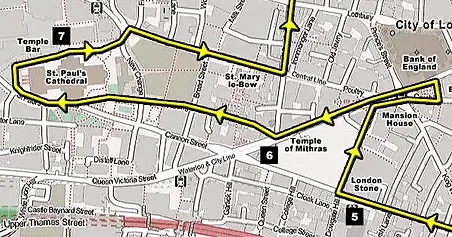
Now double-back the way you came but turn left down Cannon Street. I faced a little bit of a dilemma when I was designing the walk at this point, because no sane person would choose to walk down Cannon Street when King William Street leads to better things. But bear with me… because there is something down Cannon Street that is worth a look.
When you reach Cannon Street station look across to the opposite pavement. There should be a boring-looking grille on the wall [see 5 on the map]. Have a look through that grille and you will see the famous London Stone . Now this might be Roman, or it might not. And it might be medieval, or it might not. Or it might just be a boring lump of rock. Nobody quite knows.
Some people think that it was the stone from which Arthur pulled Excalibur. Other people think that it was the meteor which wiped out the dinosaurs. But whatever it is, it’s on display in Cannon Street.
Now turn right down Walbrook and walk to the end. I took a little detour at this point, but you don’t have to. It’s not part of the walk; but if truth be told I was knackered and I needed a rest. So I popped into St. Stephen Walbrook church and sat down and said a prayer for world peace. It’s quite a unique little church with a big slab of rock in the middle which doubles up as an altar. That’s the great thing about modern art – you don’t have to fork out thousands of pounds for a talented sculptor anymore, because you can just leave it as an unhewn lump of rock.
Back outside… turn right at the end of the street and enjoy one of the finest sights in London. Two of the buildings in this junction wouldn’t look out of place in Imperial Rome – Mansion House and the Royal Exchange . The Exchange could easily be a temple. It’s not though… it’s a shopping centre. You don’t believe me? Have a quick look inside if you’re brave enough (it took me a while to pluck up the courage to walk in there the first time I saw it).
Now head down Queen Victoria Street for some more buried Roman remains – the London Mithraeum (aka. the Temple of Mithras) [see 6 on the map]. The actual statues from the temple (or what’s left of them) are on show at the Museum of London … which is where this walk will come to an end.
Take a right into Watling Street (a good Roman-sounding name), and check out the little Dickensian side streets. Imagine if these places were lit by gas-lamps and dripped in fog. It’s the kind of place where Tiny Tim might come out hobbling on his crutches.
If you’re wondering whether Watling Street follows the line of the original Roman Watling Street, then it doesn’t – but it might be very close. Some archaeologists believe that it ran from Greenwich up to Westminster, bypassing the north bank completely, whilst others insist that it came over London Bridge and continued in a straight line through Bishopsgate. Other experts have picked out a section that runs through Park Lane and the Edgware Road. So they basically haven’t got a clue. But they can all agree that the odds of it running along the same line as the modern day Watling Street is zero.
At the end of Watling Street you’ll find the back end of St. Paul’s Cathedral , so walk through the gardens on the lefthand side until you come round to the front steps. Then stop and say another prayer. I prayed for world peace again, and also for an end to world hunger and a cure for all known diseases. They’ve got a little restaurant and some toilets downstairs, so this is the perfect place for a break. Don’t enter the cathedral through the front door though (that’s the bit you have to pay for) – you’ll find the entrance to the Crypt around the lefthand side if you’re looking at the cathedral from the front [see 7 on the map].
Now walk through St. Paul’s Churchyard (the gardens on the opposite side) until you come to Cheapside, and then check out St. Mary-le-Bow church halfway down. I actually went inside here but you don’t have to (I needed another sit down you see – my dodgy knees were killing me today).
There was a nice smell of incense floating around and the priest was pottering around having a little bit of a tidy up. The place was full of wooden school chairs – what is it with school seats in churches? They’ve even got those in St. Paul’s. It makes me think of being back at school with the teacher at the front. Here’s one famous thing that I can tell you about St. Mary-le-Bow church… you have to be born within the sound of its bells to be a true cockney.
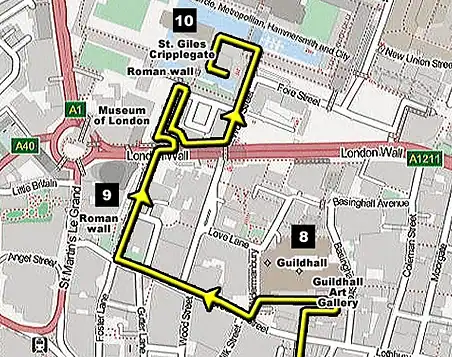
Keep walking down Cheapside and take a left down King Street, and you’ll see the facade of the medieval Guildhall straight ahead, where the Lord Mayor holds all of his City meetings [see 8 on the map].
Next door to the right is the Guildhall Art Gallery . Not very Roman, you might think (it certainly doesn’t look Roman) – but wait! What is that big grey ring of bricks that I spy on the forecourt? Well, that is none other than the original site of London’s Roman amphitheatre! How about that then? You weren’t expecting that, were you? So if we were standing here 1,950 years ago we could have enjoyed one of those Christians v The Lions sports shows. Personally I would have put my money on the lions every time. And what is even more exciting is that you can actually visit the Roman remains in the basement of the art gallery – it is totally free to enter, so there really is no excuse not to go and have a look – it’s probably the highlight of this Roman walk.
The tour gets a lot more interesting from this point on, because there are some really big pieces of Roman masonry coming up. Take a stroll up Gresham Street and bear round to the right at Noble Street. If we travelled back in time then we would now be entering the southern section of the Roman fort (which was located in the northwest corner of the city). Down the side of the street you’ll see what remains of the outer wall [see 9 on the map].
Unfortunately it doesn’t look very old anymore because it’s all been built over with bricks, but the foundations are still big and rocky like you would expect them to be. I think the Germans bombed this bit of London in the 1940s, and uncovered a lot of what you can see. So that is something that we can thank Hitler for at least – at least he did a bit of archaeology for us.
Carry on walking over the busy main road (called London Wall – where the northern edge of the city once ran) and you’ll see a little curved road down to a car-park – it’s slightly to the right of Noble Street, and heads downwards towards the left. Head down there and you will see some more wall that rises to quite a height. This time it’s a curved section that once formed part of a bastion tower. You are allowed to walk over the grass and follow it up the western edge of the fort – those offices on the right are where the barracks would have been. The wall carries on for quite a distance, and when you get to the end you’ll be treated to a nice little surprise – it opens out into a big pool of water, complete with another corner turret. It’s almost like a moat around the fort. You won’t be able to get any further unfortunately because there’s a big green gate that bars your way (unless you’ve bought some dynamite with you), so double back the way you came and head up the car park ramp to the road again.
This time we’ll take the stairs that you can see to the left. I don’t mean the concrete ones to the right – they are definitely on the left as you come up the ramp, and it should be signposted ‘Barbican Centre’ and ‘Museum of London via Highwalks’. We want the Barbican Highwalk.
Now be careful around here, because it’s notoriously easy to get lost in this place – if you don’t lose your way at least once then you will be doing very well indeed. It’s like a big concrete maze of high walks that goes up and down and round and round in circles. Someone actually got lost in here once and staggered out five years later. They had to send a search party in, which also got lost. Then they sent Ranulph Fiennes in, and he got lost as well. That is how easy it is to get lost in here. So you might want to take a packed-lunch and some bottled water with you, just in case.
Once you are on the highwalk turn to the left and keep going past the little parade of shops. Then turn left into ‘The Postern’. Resist the temptation to go down ‘Wallside’, and keep going until you come to the stairs near the end of The Postern (on the left). This will take you down to the ground level again, and plop you right in front of St. Giles Cripplegate church [see 10 on the map]. If you do a lap of the church then you will see the other side of that circular tower that we saw earlier, standing proud beside the moat. There is also another huge chunk of Roman wall along the water’s edge – the final section on our walk.
All that remains now is for you to find your way back, and not get lost. Can you remember the way back? If you can’t then that’s unlucky because I can’t be bothered to give you directions, ha ha. You should have dropped some breadcrumbs! Now you are going to be stuck in here for days and will probably die of hunger. Ah well. (I am not liable for that, by the way. So you can’t sue me.) I will keep an eye out for you the next time I visit… which will probably be in about six months.
If you manage to re-pass that little parade of shops then there is just one more thing to do… don’t go down the starting stairs again, but carry on in a straight line towards the Museum of London . If you’re not totally knackered from all the walking then it’s worth looking inside the museum to see all of the Roman remains they’ve got on display (including that Temple of Mithras stuff that we saw earlier). It’s all free and what’s even better… they’ve got a cafe and some toilets too!
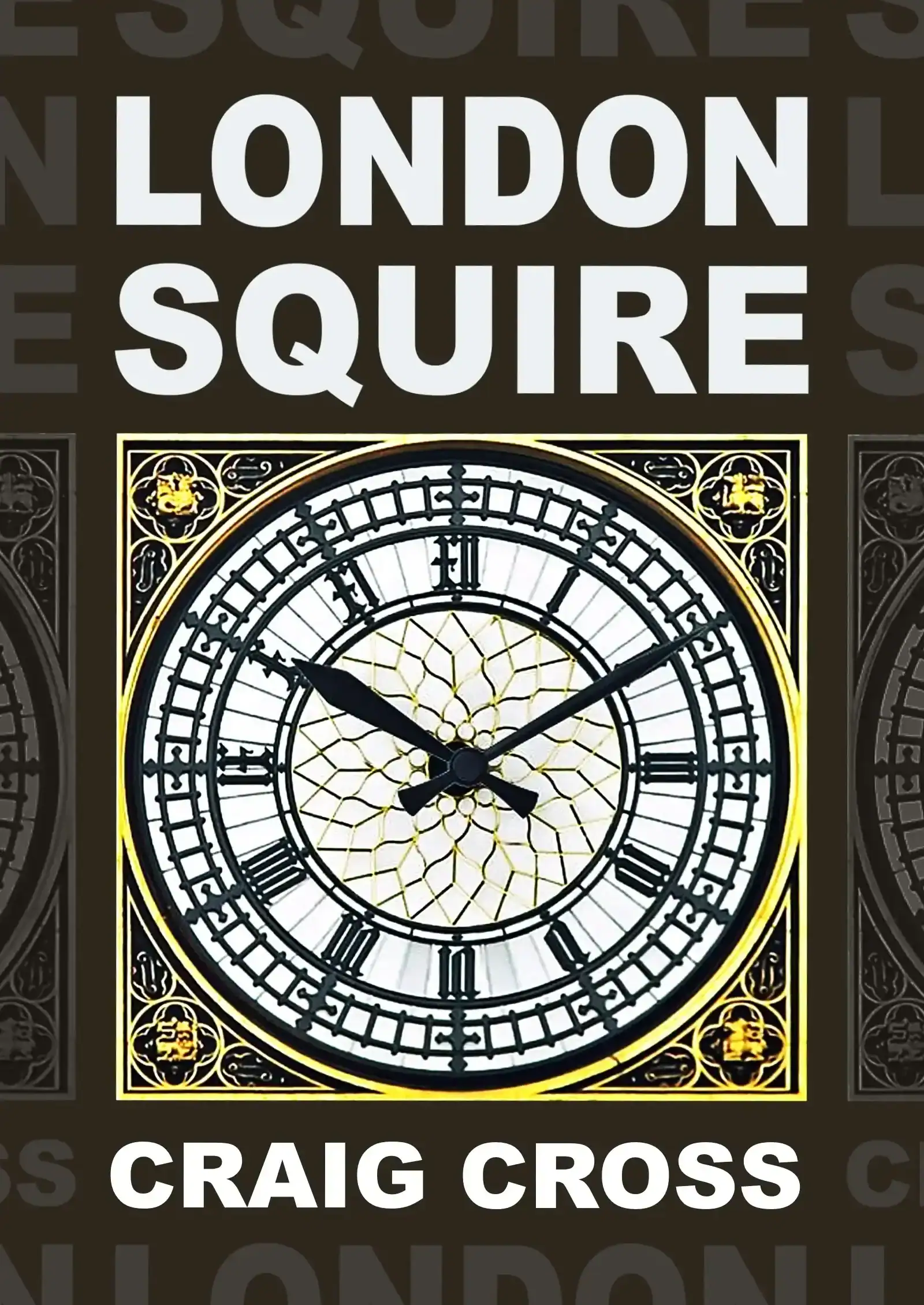
Your comments and questions
M&L Thank you for this very interesting walk. We will have to visit London again as we got caught up in interesting bits and distractions along the way, and ran out of time just at the best part at Noble Street. Thanks, again, from Ottawa, Canada.
Maggie Your site is THE BEST about London! I have been to MANY site & yours is the most thorough & interesting. It is a ONE STOP SHOPPING site for anyone who wants to visit London! Thanks, Maggie in Ohio, USA
You must enable javascript to leave a comment
> Forum: London Landmarks, Attractions & Events
- Advertise with us
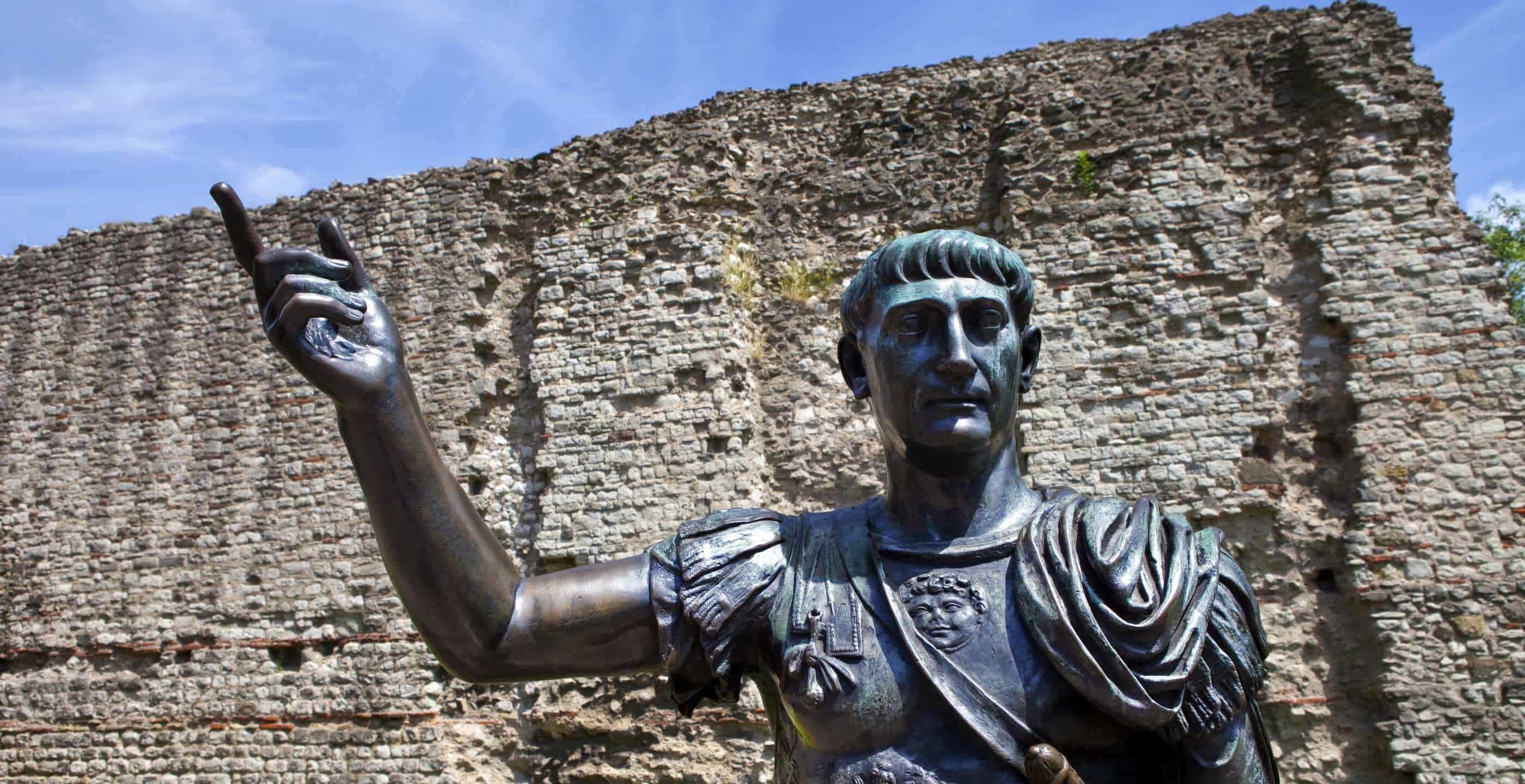
- History Magazine
- Destinations UK

London’s Roman City Wall
A Historic UK Guide to the last surviving remains of London’s old Roman and Medieval city wall.
Ben Johnson
From around 200 AD, the shape of London was defined by one single structure; it’s massive city wall. From Tower Hill in the East to Blackfriars Station in the West, the wall stretched for two miles around the ancient City of London.
With only a few exceptions, the line of the wall remained unchanged for 1700 years. Its original construction was thought to be as a protective measure against the Picts, although some historians argue that it was built by Albinus, governor of Britain, to protect his city against his arch rival Septimius Severus.
Whatever the reasons for its inception, the wall stood as one of the largest construction projects carried out in Roman Britain . It was also rebuilt and extended numerous times throughout the Roman period , requiring somewhere in the region of 85,000 tons of Kentish ragstone to complete. The wall included over 20 bastions, mainly concentrated around the Eastern section, as well as a large 12 acre fort on the north-west section of the wall.
The fort itself was the home of the official guard of the Governor of Britain, and would have housed around 1,000 men in a series of barrack blocks. The fort would also have included a series of administrative buildings, stores and other self contained amenities.
This section of Historic UK’s Secret London series will take you on a journey around the surviving fragments of this once great wall. Starting at Tower Hill, we will travel north to Aldgate and Bishopsgate. We will then turn West and head along the north side of the wall, past Moorgate, Cripplegate and West Cripplegate. At this point we will explore the remains of the old Roman Fort, before heading South towards Newgate, Ludgate and Blackfriars
Tower Hill Postern Gate
Our journey begins at the extreme South East side of the old city wall, directly adjacent to the Tower of London . The remains are actually of a medieval gatehouse which would have been built into the side of the Tower of London’s moat. Although there is limited archaeological evidence to show that the gatehouse was built on the site of a much older Roman gate, most historians are agreed that this was probably the case.
What we do know is that the medieval gatehouse had a most troubled history. Built with sub-standard foundations, and due to its proximity to the Tower’s moat, the gate was not of sound construction and subsequently started to crumble and partially collapse in 1440. Perhaps the best description of this event is by John Stow in his A Survey of London – 1603:
"But the Southside of this gate being then by undermining at the foundation loosed, and greately weakned, at length, to wit, after 200. yeares and odde the same fell downe in the yeare 1440."
Stow goes on to write a rather damming indictment of those who rebuilt the gatehouse…:
"Such was their negligence then, and hath bred some trouble to their successors, since they suffered a weake and wooden building to be there made, inhabited by persons of lewde life…"
It was no doubt due to these “lewde life” squatters that by the 18th century the gatehouse had crumbled and disappeared into the ground. It was to remain hidden until excavations in 1979.
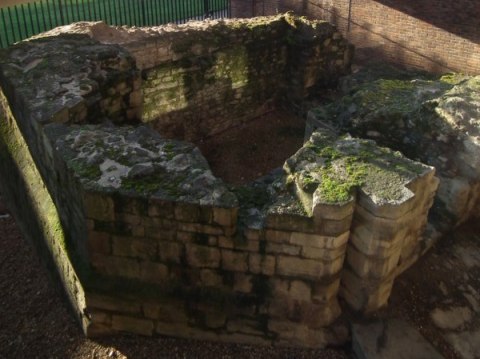
Tower Hill Roman Wall
Located in the garden to the east of the Tower Hill underpass (heading towards the DLR station) stands one of the highest remaining fragments of the old city wall. What is interesting about this section of the wall is that the Roman sections are clearly visible towards the base of the wall, up to about 4 metres high. The rest of the stonework is of medieval origins, and stands today at a height of around 10 metres.
In its heyday this section of the Roman Wall would have stood at around 6 metres high, with this eastern section including a high density of bastions. On the other side of the wall would have been a deep ditch providing additional defensive measures. This ditch would have both enhanced the height of the wall from the exterior, whilst also turning the ground into a water laden bog.
During the medieval period this area was the site of Tower Hill scaffold, where dangerous criminals, pirates and political dissidents were publicly beheaded. Among the people beheaded just to the West of the old Roman wall were Sir Thomas More, Guilford Dudley (the husband of Lady Jane Grey ) and Lord Lovat (the last man to be executed in this way in England).
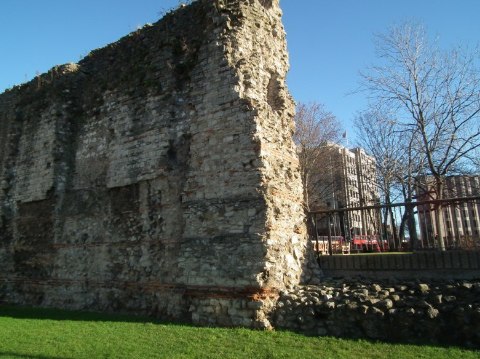
Cooper’s Row Wall
Much like the Tower Hill section of the city wall, the Roman fragments can still be seen up to about 4 metres high. Again, the rest of the wall is medieval in origin, even the archer's loopholes are still in evidence. The Museum of London writes that because there appears to be no stone structure to allow archers access to the loopholes, there was likely a timber platform that allowed movement between them. The museum also states that this section of the wall is unique in its defenses, suggesting that special care was taken with these defences due to their proximity to the Tower.
‘Blink and you’ll miss it’ pretty much sums up how to find this section of the wall. Simply head up Cooper’s Row from the Tower of London and keep an eye out on your right hand side. As soon you find The Grange City Hotel head towards the courtyard and you’ll find the wall.
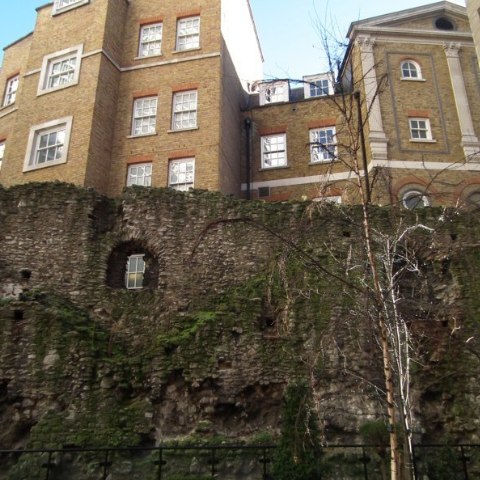
Vine Street Roman Wall
On the west side of Vine Street, where the road opens out slightly into an extremely small square, is the fourth stop on our Roman Wall tour. This 10 metre length of the Roman City Wall also includes the base of a bastion tower. These towers were scattered along the eastern branch of the wall and were mostly built in the 4th century. During its heyday the tower would have reached somewhere between 9 – 10 metres high, and would have housed catapults firing iron-tipped arrows.
It is thought that this tower was demolished during the 13th century, although other towers in the area were used throughout the medieval period.
Aldgate Roman Wall
Aldgate was once the oldest gatehouse into London, build decades before the Roman Wall that subsequently adjoined it. It was also one of the busiest gatehouses on the wall, as it stood upon the main Roman road linking London to Colchester. During its 1600 year history the gate was rebuilt three times and finally pulled down in 1761 to improve traffic access.
Aldgate was also once the home of the famous poet Geoffrey Chaucer, who lived in the rooms over the gate from 1374. At the time he was working as a customs official at one of the local ports!
Unfortunately for visitors, there’s absolutely nothing left of the original Aldgate. Instead, look out for a plaque on the wall of Sir John Cass School.
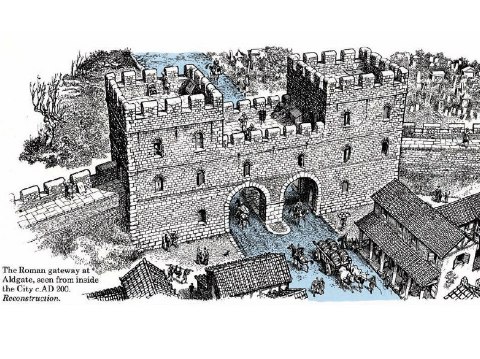
Dukes Place Wall
Before we get into the history of the Roman Wall at Dukes Place, it’s worth pointing out that it’s actually located in a subway! This section of the wall was found during excavations in 1977 during the construction of the underpass, and a cross section of the wall (including the Roman and medieval stonework) can still be seen in the subway walls.
The bottom of the Roman wall is actually around 4 metres below street level. The reason for this is that over the centuries the land level has risen in London due to additional buildings, soil and rubbish being piled on top of each other. It is even reported that by the medieval period the ground level had already risen by 2 metres.
During the medieval period, this area was home to an Augustinian Priory. Originally founded in 1108 by Queen Matilda , the priory owned a great deal of the land and properties surrounding Aldgate.
Bishopsgate
Perhaps the most famous street in the City of London, Bishopsgate derives its name from the Roman gate that once stood at the junction of Wormwood Street. Much like Aldgate, Bishopsgate was one of the busier junctions into and out of the City of London due to it’s positioning on a major road, in this instance Ermine Street which ran to York .
The original Bishopsgate stood until the Middle Ages when it was rebuilt, and during this time it because renowned for having the heads of recently executed criminals displayed on spikes above the gate.
Unfortunately nothing exists of the original gate, and no excavation work has ever taken place on the site. Nevertheless, if you find your way to the newly built Heron Tower and look to the east above Boots chemist, you’ll see a Bishop’s Mitre built high into the stonework. This marks the spot of the original gate.
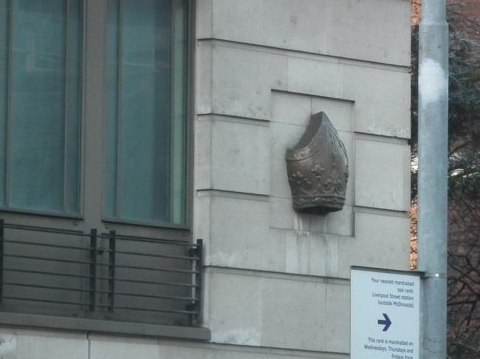
All Hallows on the Wall
At this point of our journey, the street called “London Wall” loosely follows the north edge of the old Roman wall. The street once ran alongside the defensive ditch on the outside of the wall, but the alignment was changed slightly during the street widening of 1957 to 1976.
Walking up from Bishopsgate, the first sign of the old city wall is at All Hallows Church. This wonderfully simple building was designed and constructed in 1767 by the renowned architect George Dance the Younger, although the church it replaced dated back to the early 12th century.
One of the wonderful peculiarities with this church is that its vestry is actually built into the foundations of an old Roman wall bastion. Although these foundations are now around 4 meters under ground, the semi-circular shape of the bastion can still be seen in the vestry.
If you head to the front of the church you will also notice a fairly substantial wall. Although the majority of the structure dates from the 18th century, there are still parts of the old medieval city wall built into the section nearest to the church entrance.
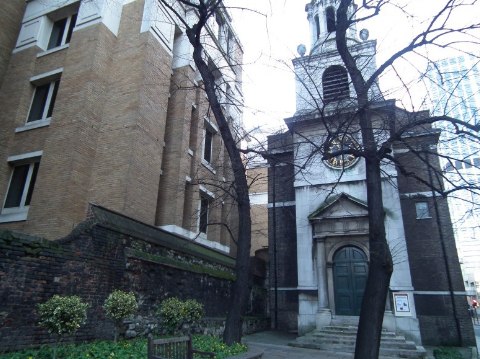
St Alphege City Wall
This section of wall was originally built in AD 120 as part of a Roman Fort, although later became incorporated into the much wider city wall. After the building of the city wall, the fort was essentially to become an oversized bastion at the North West tip of the City of London, and was home of the official guard of the Govenor of Britain. To give an idea of its size, in its heyday the fort would have housed around 1,000 men throughout a series of barracks.
This section of wall was to remain an integral part of London’s fortifications until the Saxon period, where after a period of prolonged decline an 11th century church was built in to its foundations. When the church was finally demolished in the 16th century the remains of the wall were left, and were subsequently incorporated into a new stock of buildings. During the following few centuries, cellars were built into the newer houses and subsequently into the wall itself. By the time the Roman portions of the wall were rediscovered after a World War II bombing raid, the cellar work had left a core of only half a metre thick at one end!
Today, the remains of this section of wall are still quite substantial. Although the majority of the Roman stonework has long since disappeared, the bottom half of the wall is mainly medieval in origin. The upper section of the wall dates from the War of the Roses (1477) and is substantially more ornate in character, featuring some decorative stonework.
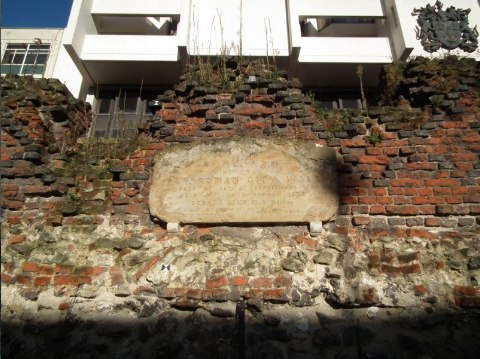
Cripplegate
Once forming the northern entrance to the Roman fort, today the only remnants of Cripplegate is a small plaque honouring its long and eclectic history. Much like the section of nearby wall in St Alphege Gardens, the original Cripplegate was built around AD 120 and began to decline in the Saxon period. However, during the Medieval period the area had somewhat of a resurgence with a large suburban settlement springing up on the northern side of the gate. This new settlement, along with easy access to the nearby village of Islington, meant that the gate was rebuilt in the 1490’s and had somewhat of a renaissance. During the following centuries it was leased as accommodation before being converted into a prison gatehouse!
Along with the majority of the other gates that once lined the ancient city wall, it was finally demolished in the 18th century to improve traffic access.
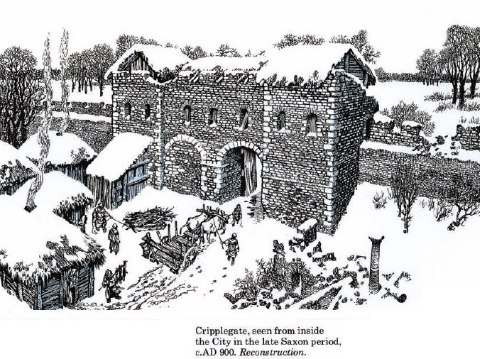
St Giles Cripplegate Wall
This wonderfully intact section of wall would have been at the north-western tip of the old Roman fort, although most of the surviving stonework is from the medieval period. During this time a series of towers were added to the structure, a couple of which can still be seen in this portion of wall.
A rather unique feature of this portion of wall is the lake that surrounds it; it actually follows the route of a much older medieval defensive ditch. This ditch was eventually filled in during the 17th century and the newly reclaimed land became an extension of the churchyard. This section of the wall subsequently became the southern boundary of the churchyard, and thus escaped relatively unharmed from any redevelopment over the next 200 years.
Moving down the line of the wall, towards the modern bridge spanning the lake, stands a large medieval tower. This tower marks the north-western corner of both the city wall the older Roman fort, and today stands at a remarkable two thirds of its original height. Originally built as a defensive measure, the tower later became a refuge for hermits (no doubt due to its close proximity to St Giles Church). During various redevelopments of the churchyard in the 19th century, the wall became buried in earth and lay hidden until World War II. Due to the heavy bombing in the Cripplegate area, the tower was once again exposed and this process was continued during the construction of the Barbican estate.
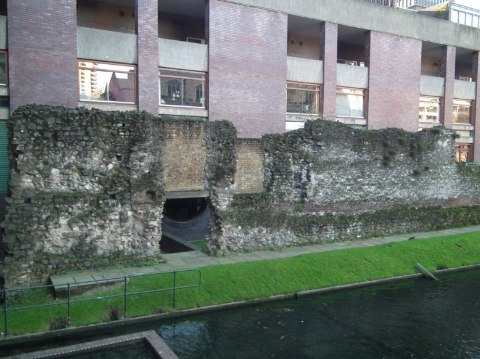
Barber-Surgeons' Hall Tower
After reaching St Giles Cripplegate Tower, make a sharp left and continue through the gardens. Once you’ve passed the shrubbery on your left, the gardens will open out and the remains of the Barber-Surgeons’ Hall Tower can be seen.
The history of this part of the wall is quite remarkable. Originally installed as a defensive tower in the 13th century, it was not until the 16th century that buildings started encroaching onto its perimeter. This expansion reached its zenith in 1607 when the Barber-Surgeons’ company built a new hall into the edge of the wall, incorporating the old 13th century tower as an apse.
Unfortunately both the hall and the tower were badly damaged in the Great Fire in 1666, although both were rebuilt in 1678. The structures were rebuilt and restored again in 1752 and 1863. However, in 1940 they were almost completely destroyed by WW2 bombing.
Today the remains of the tower, with its patchwork of stone and brickwork dating from between the 13th and 19th centuries, reflect its turbulent history. Interestingly, if you look at the new Barber-Surgeons’ Hall (opened in 1969) you will notice that an oriel has been incorporated into its design, perhaps as a testament to this little old tower!
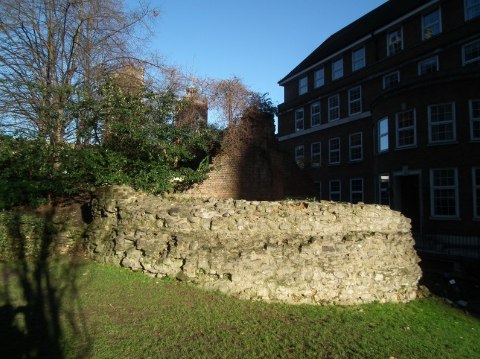
Museum of London Tower
Continuing through the gardens you’ll notice the much larger remains of another tower. Originally built in the mid-13th century, this tower was part of a substantial renovation designed to reinforce the defences of the old Roman Wall. John Stow notes this event in his “A Survey of London” published in 1598:
"In the yeare 1257. Henrie the third caused the walles of this Citie, which was sore decaied and destitute of towers, to be repaired in more seemely wise then before, at the common charges of the Citie."
Although originally built as a defensive tower, it was not long until the rapidly expanding City of London began to encroach. By the late medieval period the tower had been repurposed as a house, with arrow slits becoming windows and arches becoming doors (see the plan below, courtesy of the Museum of London ).
By the 18th century the old city limits of London had been overrun, and buildings were being constructed against both sides of the old tower, essentially shielding it from view. It remained this way for almost 200 years, until bombing in 1940 revealed the tower once again.
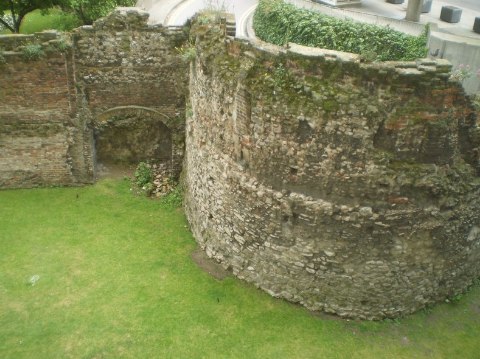
Noble Street Wall
Just across from the Museum of London lies Noble Street, providing a raised platform from which to overlook this long stretch of city wall remains. With stonework dating from the 2nd to 19th century, this section was once again uncovered in 1940 after German bombing of the area. In fact, according to City of London records this area is one of the only remaining examples of a Second World War bomb site in the city!
Originally standing at a height of over 15 feet, the original Roman wall is still evident at the base of the remains. Access to the top of the wall would have been via a set of sentry towers, one of which can still be seen towards the south side of the remains. This sentry tower also marked the south west corner of the old Roman fort.
Moving forward a thousand years, medieval tiling and stonework can be observed at the northern end of the remains. In places where the medieval wall hasn’t survived, a patchwork of 19th century brickwork can be seen.
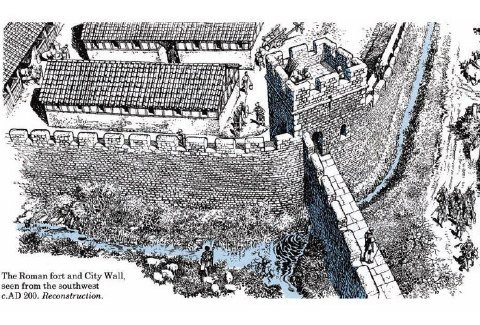
History in your inbox
Sign up for monthly updates
Advertisement
Next article.
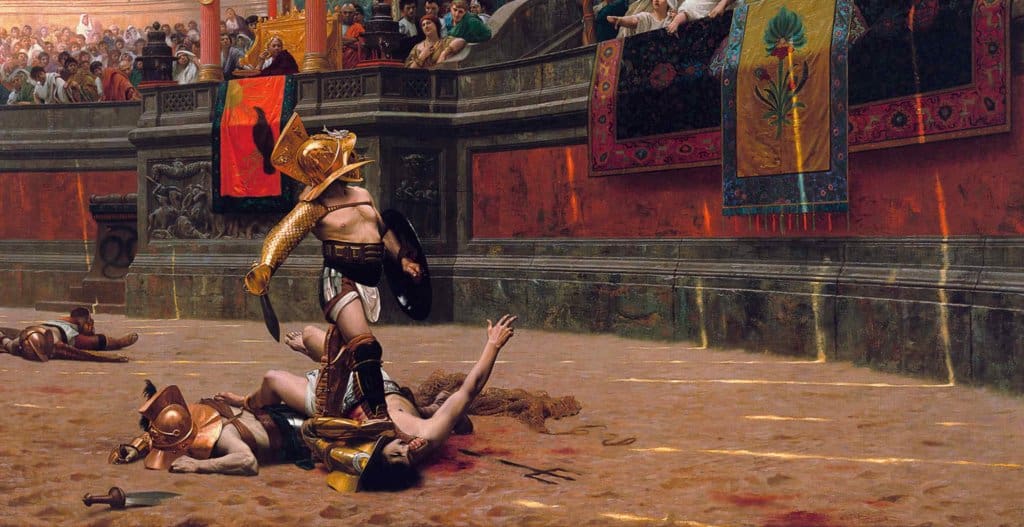
London’s Roman Amphitheatre
London's Roman Amphitheatre dates back to AD70, and is located in the Guildhall Art Gallery in the City of London…
Popular searches
- Castle Hotels
- Coastal Cottages
- Cottages with Pools
- Kings and Queens
We use cookies to make your website experience better. Please confirm you accept the use of these cookies. To find out more about the cookies we use, please read our cookies policy
Roman ruins and where to find them
- Attractions
Not all roads lead to Rome, but in the City they can lead you back to Roman London. As you stride from Tube station to office, or from hotel to restaurant, you’re re-treading the steps (albeit, about seven metres higher) of Romans going about their daily lives 2,000 years before you.
The bustling commercial centre we know today sits squarely on the site of the Roman’s bustling commercial centre, Londinium, and fascinating glimpses of Roman life can still be seen dotted throughout the City of London – from remains of the city wall to excavated ruins of a bathhouse and amphitheatre.
Several Roman ruins can be viewed on a special self-guided walk – pick up a Roads to Rome map from the City Information Centre next to St Paul’s Cathedral – or make time to see one of these key sights on a regular day in the City…
Billingsgate Roman House and Bath
Descend into the basement of an unassuming office block and come face-to-face with the remains of a 2,000-year old Roman home and bathhouse. This stunning discovery was unearthed in 1848 and you can view the preserved remains as if archaeologists had left the site just yesterday.
Special access to these remains is limited to pre-booked tours on Saturdays (from April to November) for adults and children 8 years and over; additional private group tours are possible at other times by prior arrangement.
Find out more
© Billingsgate Roman Bath House
London’s Roman Amphitheatre
It’s the tranquil Guildhall Art Gallery today, but 2,000 years ago this spot would have had a very different ambience. Violent scenes of gladiatorial combat and public executions, all in front of a baying crowd, were commonplace in this Roman amphitheatre – a remarkable find only discovered during excavation work for the new gallery in 1988.
Book your free ticket to Guildhall Art Gallery and you can also view the amphitheatre remains including the entrance tunnel, east gate and arena walls beneath the Gallery – the extent of the outer wall is marked in Guildhall Yard.
© London’s Roman Amphitheatre
Outdoor Remains of the Roman city wall (various locations)
As Londinium’s importance grew, so too did its need for strong defences. Sometime between AD190 and AD225, the Romans embarked on one of the largest construction projects in Roman Britain – building the city wall, a two-mile long protective ring around Londinium.
Remains of this wall are still visible today, some with medieval alterations. The best section of city wall can be seen at Tower Hill, an illustration of the classic Roman construction of squared stone blocks and triple rows of red tiles.
City Wall at Vine Street (new indoor - opened 2023!)
On Vine Street, a carefully preserved subterranean chunk of city wall and bastion tower, once buried beneath two office buildings, can be viewed at street level through large windows - and since summer 2023, you can go inside to see them up close. During your visit, take a look at the many historic objects on display which were also unearthed on the site by the archaeologists.
© The City Wall at Vine Street
London Stone
One of the capital’s most ancient landmarks and said to mark the heart of London, the London Stone can be viewed in the wall of 111 Cannon Street. Legend has it that if the Stone is ever moved, the future of London will be in jeopardy – with its remains under lock and key in a dedicated, glass-fronted enclosure, the future looks safe.
© London Stone
London Mithraeum Bloomberg SPACE
Under the European headquarters of financial news company Bloomberg lies a reconstruction of an ancient Roman temple, displayed at the site of its remarkable discovery in 1954. The Temple of Mithras, built in the 3 rd century AD, was uncovered along with jewellery, pottery and writing tablets in what became one of British archaeology’s most significant events.
The temple ruins and over 600 unearthed artefacts are brought to life in this immersive, multi-sensory experience at London Mithraeum Bloomberg SPACE . It’s free to visit but booking is required.
© London Mithraeum Bloomberg SPACE
Roman Floor at All Hallows by the Tower church
Descend into the Crypt Museum of All Hallows by the Tower , one of the oldest churches in the City of London, and you’ll find fragments of a Roman tessellated floor and plastered wall of a 2nd century domestic house. A small collection of other Roman artefacts and a model of the city shed more light on how everyday Romans lived, worked and socialised.
Anglo-Saxon crosses found in the churchyard along with a church plate and ancient registers dating back to the 16 th century, continue the City’s story in the centuries after the Romans left.
Roman Pavement in St Bride's Church
On a similar theme, head into the crypt at St Bride's Church to see the remains of a Roman pavement dating back to around AD 180. A range of Roman artefacts that were discovered on this site are on display in the crypt museum.
When the Romans established Londinium following the invasion under the emperor Claudius in AD 43, they dug a substantial ditch (the purpose of which is unclear) just outside the walls of the Roman city, on the site of what is now St Bride's church. A building was constructed here (including the area of pavement that is still visible) which may have been connected with one of the earliest places of worship.
Related Articles
14 fantastic things to do in april in the city of london, 5 family-friendly activities to enjoy in the city of london during the easter holidays, top things to do on a friday in the city of london, 10 hidden gems in the city of london for you to explore, where to ‘meet’ history’s great characters in the city, city of london children’s trail, a day in the city: art-lovers edition, why you should stay in the city on your next trip to london, family fun activities to enjoy on the weekend in the city of london, traditional pubs for a drink in the city, enjoy stunning views at rooftop bars and restaurants in the city, romantic places for a date in the city, 5 of the best spas in the city of london, must-try immersive experiences in the city, 8 of the best ‘instagrammable’ places in london, luxury shopping in the city, an evening in the city, 6 of the best independent shopping experiences, 6 special afternoon tea spots in the city of london.
Top Sight Tours Group

Walk with the Romans in London
In the year AD 43, following an invasion led by the Roman Emperor Claudius, the Romans founded the town of Londinium (the Roman name for London). Although Britannia was abandoned by The Romans thousands of years ago, echos of London ancient past can still be witnessed in certain parts of the city. Interested in walking in the footsteps of the Romans? Book a tour to visit the Roman Walls today and scroll down for some of the amazing history you’ll be able to explore, all without leaving the city!
Within the Square Mile-
The original city was largely contained within a set of defensive walls, roughly contiguous with the modern day Square Mile, although not extending quite so far west. The walls were enlarged in medieval times, and significant sections can still be seen. Meanwhile, a host of other Roman treasures can be spied in the basements of the City .
Follow the Wall

The old Roman wall can still be glimpsed at a handful of sites around the City. Only one section still follows the modern boundary of the Square Mile. The wall’s continuation to the north can be accessed via the courtyard of the Grange City Hotel on Cooper’s Row. If you only seek out one piece of wall, head here. Excellent signage provides a history of the wall, and you can even walk through the structure via an arch to the left (although this and other upper sections are medieval).
The next visible stretches can be found along the aptly named thoroughfare of London Wall, towards the Museum of London . The wall fragments here were also part of a large Roman fort, which nestled in the north-west quarter of Londinium. There’s plenty to see, including towering remains in the gardens of the Barbican and further, well-labelled structures along Noble Street. An excellent view can be gained from the Museum of London’s Roman gallery. Needless to say, this also contains plenty of artifacts from Roman London, and is an essential stop for anyone wanting to learn more about our city’s origins.
These are the only sections of wall on outdoor display. Other fragments remain in various basements around town, and require special access. One of the best, the old fort gate, is locked up in the car park near the Museum of London. The remains can be visited on regular tours, and Open House weekend, but a less substantial section can be seen in the car park at any time. Another impressive fragment lurks in the basement of the Old Bailey, and several office blocks along the old perimeter, but you need special permission to visit. More accessible (but trapped behind an entry charge) is the section of river wall inside the Tower of London.
Other remains
The most spectacular Roman remains of all can be found in the basement of Guildhall Art Gallery. Historians had long conjectured that Londinium must have had some kind of sporting arena. It was only discovered in the 1980s, during the building of the gallery. The amphitheatre’s remains are now on permanent exhibition, and are free to visit during gallery opening hours. You can see the footprint of the old amphitheatre while standing above in Guildhall Yard. Its perimeter is marked out in grey paving.
Three City churches also boast significant Roman remains. St Bride’s off Fleet Street shows off a Roman pavement in its crypt. All Hallows by the Tower’s crypt museum houses the tessellated floor of a domestic house from the period, as well as a wonderful model of Londinium from the 1920s. St Magnus the Martyr, meanwhile, displays a probable timber from the Roman version of London Bridge (below), which crossed the Thames from this site.

The Temple of Mithras, rediscovered in the aftermath of the second world war, was later shifted to Cannon Street and displayed as one of London’s most visible Roman remains. It was boxed up and put in storage to allow development of a huge new headquarters for Bloomberg. That dig uncovered many more Roman artefacts, along the course of the buried River Walbrook. The temple will be reinstated on its original site, and on public display again in a couple of year’s time.
Lower Thames Street is not one of the most exciting thoroughfares in the capital. It hides an ancient secret, however. Beneath an anonymous office block lie the remains of an extensive Roman bath house and villa . The site is usually closed to the public, but is occasionally accessible at times such as Open House weekend.
Many other fragments of the Roman city exist in private basements throughout the Square Mile. Most are rarely accessible, though there are exceptions. A basement hairdressers on the western edge of Leadenhall Market includes a short section of the old Forum which visitors will get access to on one of our many tours . As always, more information on how to view the Roman ruins of London is available on our website as well as many other amazing and educational experiences!
Subscribe to be the first to get new family travel inspiration Sign up today!

MUMMYTRAVELS
Can you really keep travelling with a child in tow?
Subscribe to be the first to get new family travel inspiration
The best Roman sites in London
Almost 2,000 years have passed since the Romans established Londinium on the banks of the Thames, but centuries on, you can still spot Roman sites in London among the modern city.

contains affiliate links *
If your kids are studying Ancient Rome at school – or you’re simply a little bit fascinated by what the Romans did for us – there’s plenty of chance to discover Roman London with kids.
From the best museums on Roman history to ancient walls, temples, baths and amphitheatre, and a walking route to follow, here’s where to find the best Roman sites in London.

The Roman city walls
The two-mile wall stretching around Londinium was one of the biggest construction projects carried out in Roman Britain, along with Hadrian’s Wall and the network of roads.
With a few medieval additions, the walls formed the boundary of the City of London for centuries – and even stopped the Great Fire of London spreading any further than it did.
Two of the easiest sections to spot are by the former Museum of London site and the Tower of London, where you can also spy a statue of the emperor Trajan in front of the stone and tile wall, built in 200AD.
For one of the oldest pieces, head to St Alphage Garden, not far from Moorgate tube and the Guildhall. Part of a Roman fort, it was incorporated into the city wall. You can also see ruins of the Roman fort on Noble Street and London Wall.

London Mithraeum
One of the most impressive Roman sites in London is the London Mithraeum. Hidden for centuries until it was rediscovered in 1954 at a Second World War bomb site, the Roman temple of Mithras was founded in the 3rd century by the Walbrook, one of London’s lost rivers.
And in 2017, the reconstructed temple was reopened in its original underground site, beneath Bloomberg’s European Headquarters at 12 Walbrook.
As well as interactive displays on the men-only Roman cult, there’s information aimed at kids. It’s free to enter but tickets must be prebooked .
Check out my mini guide to Roman London for kids
Billingsgate Roman House and Baths
Everyone knows the Romans loved their baths – most famously in Bath itself, although we’ve also seen reconstructed ones at Chester and there are others at Roman sites around the UK .
So there’s no surprise that the citizens of Londinium had their own public bathhouses, while the wealthy enjoyed private baths attached to their house – using either was as much of a social occasion as a chance to get clean.
And you can still visit the Billingsgate Roman Bathhouse at 101 Lower Thames Street, tucked away in the basement of an office block, with the remains of several of the different rooms – the cold frigidarium, the tepidarium and the hotter caldarium where iron scrapers called strigils would remove the dirt and sweat, with perfumed oils applied.
The site is normally open to the public on Saturdays between April and November. Or you can take a virtual tour of the baths.

Museum of London
While the Museum of London isn’t a specific Roman site itself (although you can spot the walls during a visit), it’s easily one of the best places to discover Roman London with kids.
EDIT: The museum is now temporarily closed until reopening in its new site at Smithfield in 2026
The museum has one of the best collections to learn about Roman Londinium , with everything from models to mosaics, information on daily life as well as jewellery and the tombstone of a Roman soldier. And that’s just for starters.
You can see a teenage skeleton, a girl who started life in north Africa but travelled to Londinium at least four years before her death, and who can trace her ancestors to the fringes of the Roman empire. There’s also a stone inscription featuring the first known use of the term Londoners – or ‘ Londiniensi ‘.
For more free things to do in London with kids , check out this post
Visit an amphitheatre
Life in the Roman Empire wasn’t always easy, but the Romans famously knew how to have a good time – which was why experts were puzzled not to find the remains of Londinium’s amphitheatre in this important city.
Until 1988, when Museum of London archaeologists taking part in a dig before a new Art Gallery building project, discovered it, hidden in Guildhall Yard, next to the city’s historic Guildhall.
A black line in the courtyard follows the outline of the amphitheatre underneath, so you can trace it before you explore, to get a good idea of the size.

Only a section remains (don’t expect to find the Colosseum tucked away beneath London’s streets) but the clever displays help transport you back to the time when wild animal fights and gory gladiatorial games were the best way to spend your free time.
It’s free to enter but you must book in advance .
Walk along the Thames
The river has been at the heart of London since its earliest days, and I still believe that no visit to the city is complete without a walk along the Thames .
Roman artefacts have been dug up on its banks by archaeologists and mudlarks for centuries, including an oil lamp and bone hair pin within the past decade alone, as the tides and wakes of the boat traffic stir up the silt.
Towards Southwark, an amphora containing fish sauce was found, marked with the words ‘Lucius Tettius Africanus excellent fish sauce’ – empty except for a few fish bones.
It’s here too that the original London Bridge would have crossed the river. The Romans built the wooden construction in 55AD, leading from Londinium to what’s now Southwark.
A short distance from the current London Bridge, it stretched from near the church of St Magnus the Martyr to Hay’s Wharf (and today’s Hay’s Galleria) on the south bank.

See a Roman Road
If you had crossed the bridge from Roman Londinium across the Thames, you’d have found yourself at the start of roads leading to the south coast, part of Rome’s famous network.
One of the roads passed straight through the point where Southwark Cathedral stands today and as you exit the building, you can look down to see a section of road dating back to the 1st century AD.
Excavations also unearthed Roman objects in a well, including statues and part of a tombstone. Previously on display at the Cuming Museum, you can now see them online .

Spot part of a Roman wharf
If you walk down Fish Street Hill, you’re in the heart of Londinium, possibly on one of the earliest streets in Roman London.
And as well as following the path to the original London Bridge, you can even find a timber from a Roman wharf – or potentially even the Roman bridge – at the church of St Magnus the Martyr.
The church is home to several ancient sections of previous London Bridges, including medieval stones and an 18th century archway, and inside the arch sits the timber, thought to date back to 75AD and found on Fish Street Hill.

Find the Walbrook
The Thames wasn’t the only river which Roman Londinium was dependent on – the main source of water for the original settlement was the River Walbrook.
One of London’s ‘lost rivers’ it still flows deep underneath the city, although the stream itself has long been built over. But you can still walk along its route, flowing along the path of today’s Curtain road towards Finsbury Circus down to the Thames between Southwark and Cannon Street bridges.
At Cannon Street, make a slight detour to no 111 where you’ll find the London Stone, a block of limestone which is thought to date back to Roman times, possibly used as a distance marker.
A string of legends have grown up around it, including the one saying that if the stone is removed, London will fall (although conservationists took the risk when it was moved temporarily to the Museum of London a few years ago).
The Temple of Mithras also lies along the path of the Walbrook, so you can combine both, and it’s around the river’s path that the most recent discoveries have been found, including a fresco at Liverpool Street Station and an early Roman site with an astonishing 14,000 plus artefacts.
British Museum
If you want to understand Londinium’s place in the Roman Empire, head to the British Museum, which traces 1,000 years of Rome’s history, from its legendary founding to Emperor Constantine’s creation of his new capital of Constantinople, and the beginning of the fall of the empire.

There’s also a separate room on Roman Britain – take a virtual tour of this gallery here – and most excitingly for kids in London, a gladiator’s helmet found in Suffolk , as well as another brought from Pompeii .
But you can also spot everything from everyday details, such as the food eaten in Roman Britain and the sports they would have watched, such as the statue of a famous discus thrower, along with jewellery and gold.
Don’t miss the temporary exhibition, Legion: Life in the Roman Army, including a tie in with Horrible Histories – check out my Legion exhibition review of a visit with kids
Leadenhall Market
No Roman city was complete without its Forum – more than a marketplace, this was the heart of Roman society, with major temples and government buildings like the basilica around it too.
And Londinium’s Forum is thought to have been the largest one north of the Alps, a centre for trade that Roman historian Tacitus called “much frequented by a number of merchants and trading vessels”. The basilica alone was bigger than St Paul’s Cathedral is today.
Little remains but the site has kept its old purpose and is now the location of Leadenhall Market: you’ll have to use your imagination as you wander – there’s only the base of an arch to be seen in a basement of a hairdresser’s at the corner of Gracechurch Street and Leadenhall Market, if staff are happy to show you.
If you’re looking for Roman London with kids who are also Harry Potter fans , the market doubled as Diagon Alley for an added excuse to visit .

Find the site of a Roman temple
While most of the Roman sites in London are concentrated around the City of London and Southwark, if you venture a little way south-east of the centre, you can find the remains of a Roman temple in Greenwich Park .
Thought to be a Romano-Celtic temple, dating from before 100AD it would have been close to the main road of Watling Street, running to Kent and is thought to have been used until the Romans left Britain in the 5th century.
As well as tessellated floors and pavements, a 1999 dig found part of an inscription to Jupiter and the spirits of the Emperor, as well as coins.
There’s not a huge amount to see any more, but what’s left is protected behind railings on Temple Walk in the eastern side of the park.
For more things to do in Greenwich with kids , check out my top picks
Follow a Roman walking tour
Although it’s easy to create your own walking tour, or team together different Roman sites in London, you can also follow this suggested Walk Roman London route , taking you past some of the key locations.
There’s also a shortcut part-way through if you’re exploring Roman London with kids and want an easier option, or to split the walk into two sections.

As a bonus, if you venture west from Roman Londinium, you can spot the statue of Boudica in the middle of Westminster Bridge. Not itself a Roman site, but if you’re fascinated by Roman history, you can’t miss this depiction of one of their greatest enemies, the Queen of the Iceni who burned Londinium during her revolt.
For more Roman places to visit in the UK , check out my pick of the top sites across the country.
Roman London with kids: reading and activities
To help bring Roman London to life, as well as learning more about the Roman Empire, I’ve rounded up some of the best books and activities that my daughter enjoyed.
Horrible Histories are always a fun and easy way for kids to learn more about the past, and there’s both Ruthless Romans and Rotten Romans in the collection. Or So You Think You’ve Got It Bad: A Kid’s Life in Ancient Rome is another fun way to make history feel real (who fancies washing clothes in wee?), created in collaboration with the British Museum.

DK Find Out Ancient Rome is packed with facts about Roman life, while A Visitor’s Guide to Ancient Rome is also full of information on everyday life, from fashions to festivals and the most important buildings.
The Story of Rome is another good overview of the history of the Roman Empire, and to learn more about the beliefs of Ancient Rome, this book of Roman Myths has background on legends as well as gods and goddesses, all aimed at kids.
For wannabe centurions (and gladiators), check out So You Want to be a Roman Soldier , including how to care for your sandals and operate a catapult, and the more in-depth Roman Soldier’s Handbook .
There’s also this Sticker Romans book, with information on life in the Roman Empire as well as plenty of different outfits to play with. The Horrible Histories series also has a Rotten Romans sticker book .
For more unusual things to do in London with kids , check out my pick of the best
PIN FOR LATER: THE BEST ROMAN SITES IN LONDON

Disclosure: This post contains affiliate links – any purchases you make are unaffected but I may receive a small commission
Museum of London images copyright MummyTravels, all others courtesy Depositphotos
Award-winning family travel blogger and mum to the mini traveller, aka Minnie. Together we've visited Europe, America, the Caribbean, Africa and Asia, tried a cruise and a road trip, and survived countless long-haul trips. London (UK) based. Serious beach habit.
Leave a Reply Cancel reply
Your email address will not be published. Required fields are marked *
This site uses Akismet to reduce spam. Learn how your comment data is processed .
JavaScript is turned off in your web browser.
Turn it on to take full advantage of this site, then refresh the page.
Roads to Rome
Self-guided walk.
The City of London is the oldest part of London, dating back to AD50. Roman invaders built a bridge over the River Thames - the only crossing into the City for 1700 years - and created a settlement around it, named Londinium. The new settlement was well placed on the river, and traders soon flocked to Londinium to buy and sell goods, making it an important commercial centre.
This walking trail explores Roman Londinium, taking in 13 sites along the way including some of the remains that are still visible today, and also provides the spark for you to imagine what the ancient settlement looked like.
There are two ways you can follow this trail: half-way through you can choose to either take a short-cut to rejoin the trail nearer the end (taking approximately 90 minutes in total), or continue on for another hour to discover more of the City's most striking Roman remains.
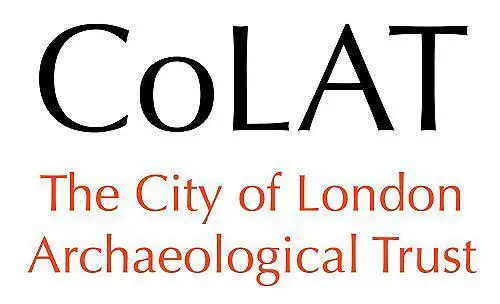
- London's Roman Amphitheatre
- Billingsgate Roman House and Baths
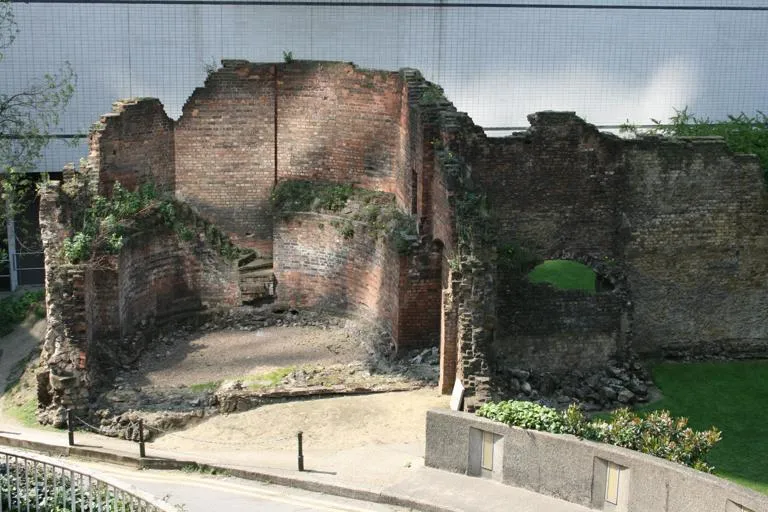

IMAGES
VIDEO
COMMENTS
Book a Roman London tour on the City Guides website. They also do daily tours, covering such themes as the Great Fire of London, City churches, Fleet Street, and London's bloody past.
The City of London organizes tours of the remnants of a Roman bath and house located in the basement of an office building. The tours take place on Saturdays and Sundays, last 45 minutes and cost just £9/adult and £7/concession. Book the tours on their website. 8. Tower Hill Roman Wall.
This private walking tour is an essential experience for anyone passionate about history, archaeology, or the enduring legacy of one of the world's greatest cities. Come along and let us reveal the wonders of Roman London, a journey through time where the past is always underfoot, waiting to be rediscovered. Your Guide: Ian McDiarmid.
Plenty! Join our Roman guided tour and let us 'roam' around the City and discover a history that dates back nearly 2,000 years. Let one of our qualified City of London Guides reveal the ancient city of Londinium that lies beneath your feet. Learn why the Romans founded the City of Londinium, what they bought - and what they liked to export.
Roman London Walk . The best way to experience all of these things — and more — is to take a Roman London walking tour. This will take you to the sites above and provide you with a guide who can also inform you about all the unique aspects of the ruins. Much of the remains are 7 metres below ground so you have to know where to look.
"Fab tour of Roman London, Ian was a great guide, very knowledgeable and happy to answer questions. I definitely recommend it." Maria "5 stars This was my perfect walking tour. The group was the right size, I could hear everything the guide had to say. There was some walking (much preferable to ambling very short distances).
Half Day Walking Tour of Londinium : Roman London. It was the Romans who founded the city of Londinium nearly 2000 years ago. This walking tour takes in some of the Roman ruins which can be found underneath the steel and glass palaces of the present day City of London. You will be amazed to see how much has survived the Great Fire and the Blitz ...
Tailor-made for archaeology fans, this private walking tour takes you off the tourist track and into the nooks and crannies of central London where Roman ruins still lurk, almost 2,000 years after they were built. Discover the old Roman baths, the ancient city walls, the remains of an amphitheater, and, when access allows, the Temple of Mithras that rests beneath a 21st-century office tower.
Tailor-made for archaeology fans, this private walking tour takes you off the tourist track and into the nooks and crannies of central London where Roman ruins still lurk, almost 2,000 years after they were built. Discover the old Roman baths, the ancient city walls, the remains of an amphitheater, and, when access allows, the Temple of Mithras that rests beneath a 21st-century office tower.
No tour of Roman London would be complete without a visit to the Museum of London. It's an under-appreciated city gem with a cache of Roman goodies. The museum takes you on a journey of the history of London, from its prehistoric first settlers around 450,000 B.C. to today's contemporary multicultural hub.
But this walks aims to dig a little deeper and explore why the Romans came, why they founded London and how it developed through the c.400 years of Roman rule. NB if the dates below don't suit you, email me ([email protected]) to let me know what you want to do: most times I can rearrange the schedule to suit demand. Duration 120 mins (2 ...
Londinium: Explore The Remains Of Roman London. Distance: Approx 4¼ miles. Time required: 1½ to 2¼ hours (based on a leisurely 20-30 mins per mile, but you should add on more time if you want to stop at any of the places) Starting point: Outside Tower Hill station.
Discover where you can still see Roman ruins in the ancient heart of London. Learn the easiest way to tunnel into the Bank of England's vaults. Find out about the sinister and bloody past of the Tower of London. Full description. Travel through two thousand years of history, meeting Romans, kings, Charles Dickens, Anne Boleyn's ghost, and Queen ...
Full description. Discover the secrets of ancient Londinium, the vibrant city founded by Romans almost 2,000 years ago, on this walking tour with Context Travel expert Dr. Alan Montgomery, a guide, author, and scholar of Art History and Architecture, and Classical Civilization. While much of the Roman city has been destroyed or covered over by ...
The London's Roman Amphitheatre is an interactive and educational attraction, which allows you to dive into the ancient history of Roman London. Lost for centuries, the original circular walls of the Amphitheatre were rediscovered by archaeologists working on the site of the new Guildhall Art Gallery building in 1988.
All Hallows on the Wall. At this point of our journey, the street called "London Wall" loosely follows the north edge of the old Roman wall. The street once ran alongside the defensive ditch on the outside of the wall, but the alignment was changed slightly during the street widening of 1957 to 1976.
Roman Floor at All Hallows by the Tower church. Descend into the Crypt Museum of All Hallows by the Tower, one of the oldest churches in the City of London, and you'll find fragments of a Roman tessellated floor and plastered wall of a 2nd century domestic house.A small collection of other Roman artefacts and a model of the city shed more light on how everyday Romans lived, worked and ...
Tower of London - There is an old portion of a tower from the London Wall on the grounds of the Tower of London. Tower Hill Tube Station - At the east end of one platform, you can see a very small portion of the subterranean Wall, plus a plaque briefly explaining Roman London. One America Square - Now a commercial building, there are ...
Needless to say, this also contains plenty of artifacts from Roman London, and is an essential stop for anyone wanting to learn more about our city's origins. ... London Top Sights Tours : Top Sights Tours Group . Email: [email protected]. Telepone: +44 (0) 7803 852 499.
The Roman London Walking Tour continues its exploration of Roman artifacts by uncovering the London Stone and Mithraeum, providing further insights into the ancient history of the city. As participants delve deeper into the tour, they unearth ancient artifacts that offer a deep dive into the history of London. One of the highlights of the tour ...
London Mithraeum. One of the most impressive Roman sites in London is the London Mithraeum. Hidden for centuries until it was rediscovered in 1954 at a Second World War bomb site, the Roman temple of Mithras was founded in the 3rd century by the Walbrook, one of London's lost rivers. And in 2017, the reconstructed temple was reopened in its ...
Start: The Tower of London and Medieval Postern Gate. When William the Conqueror built the Tower of London in 1077 he incorporated a section of Roman wall into it. This was unfortunately lost during medieval upgrades to the Tower. You can still see the line of the old wall however inside the Tower, should you visit.
Roads to Rome: Self-guided Walk PDF (3MB) Date submitted: 1/04/23. This walking trail explores Roman Londinium, taking in 13 sites along the way including some of the remains that are still visible today, and also provides the spark for you to imagine what the ancient settlement looked like. There are two ways you can follow this trail: half ...